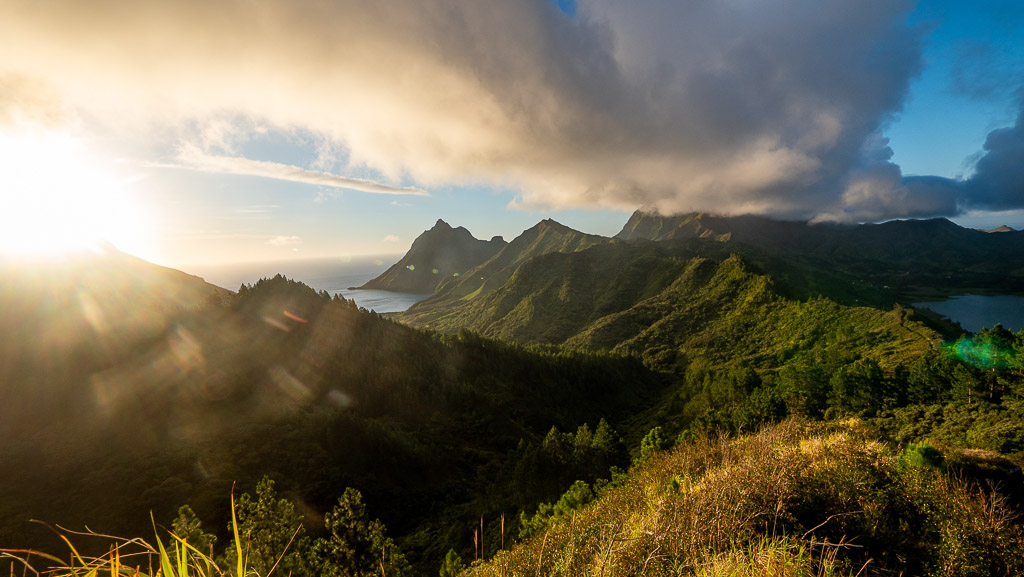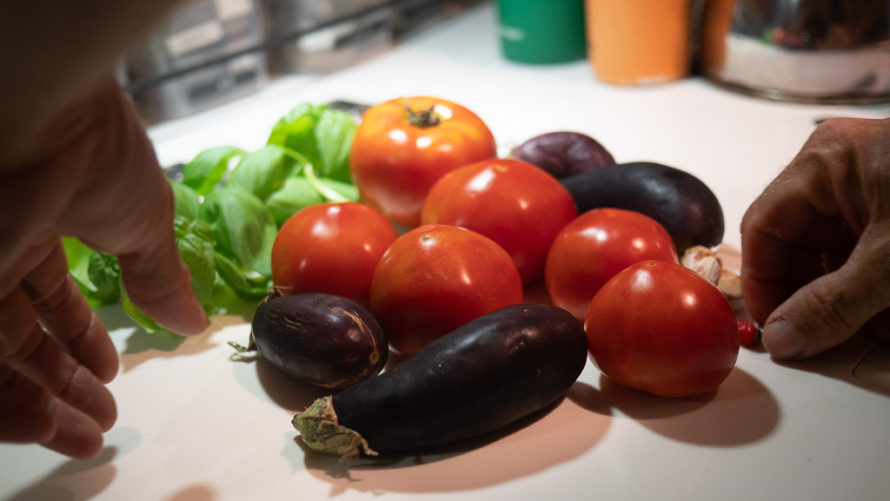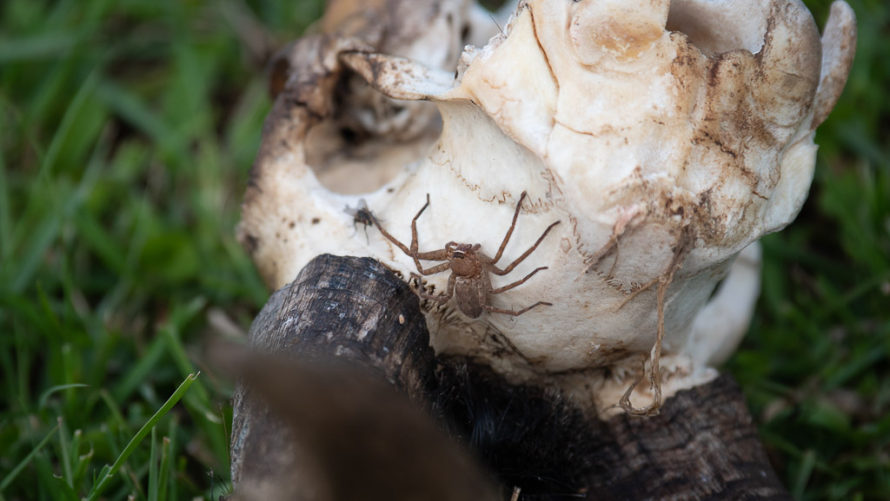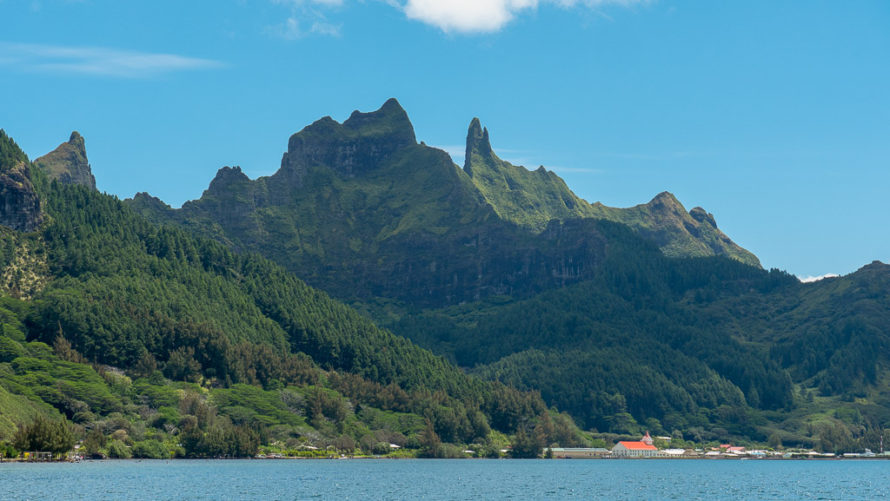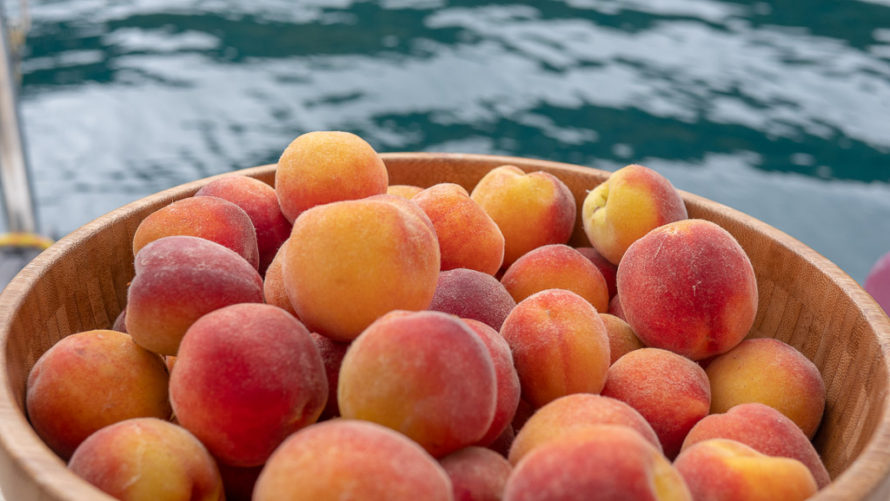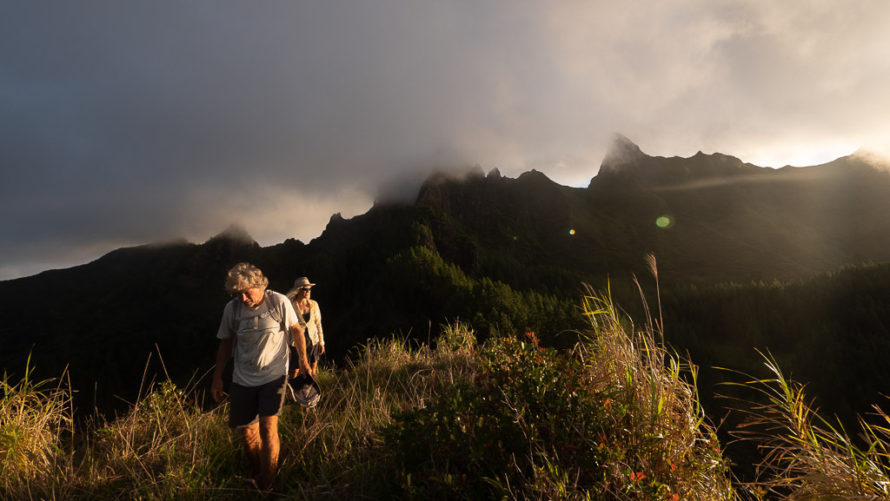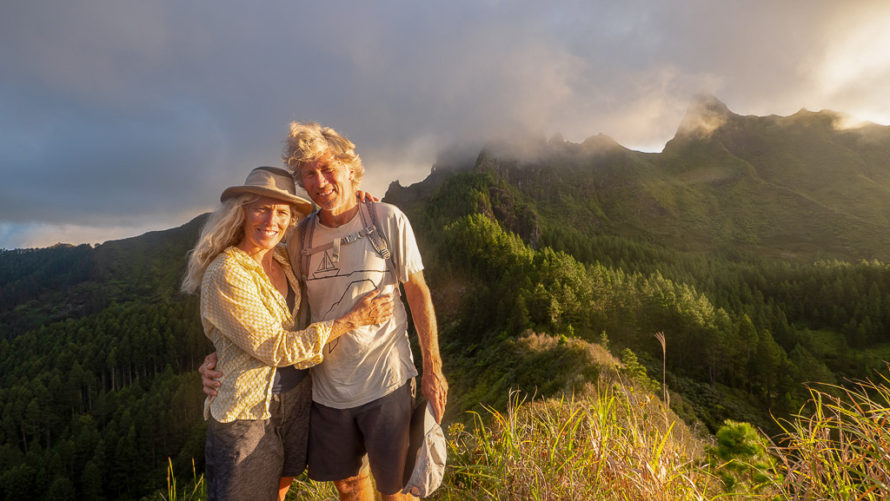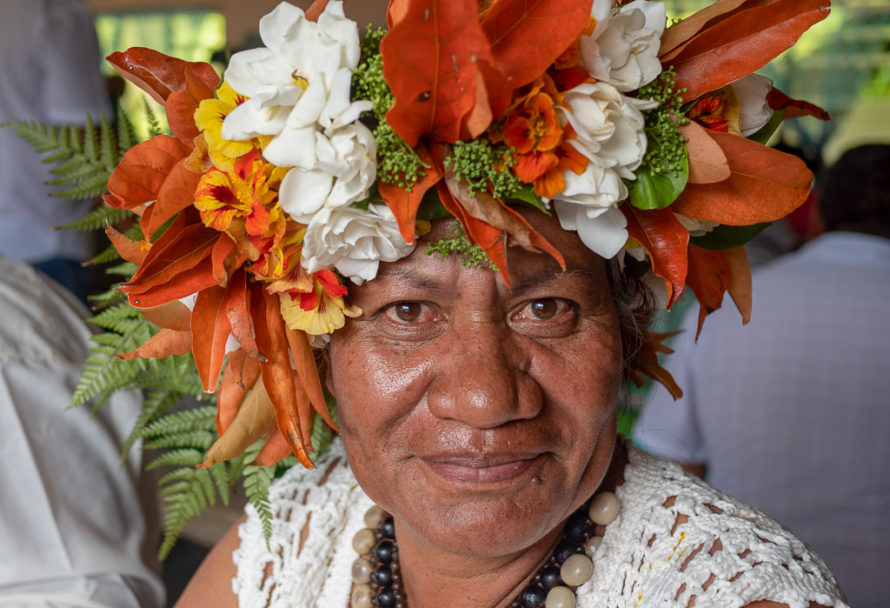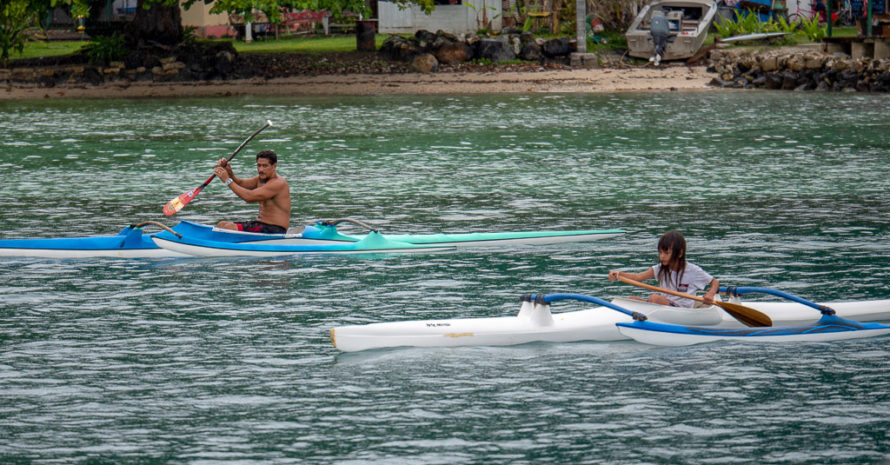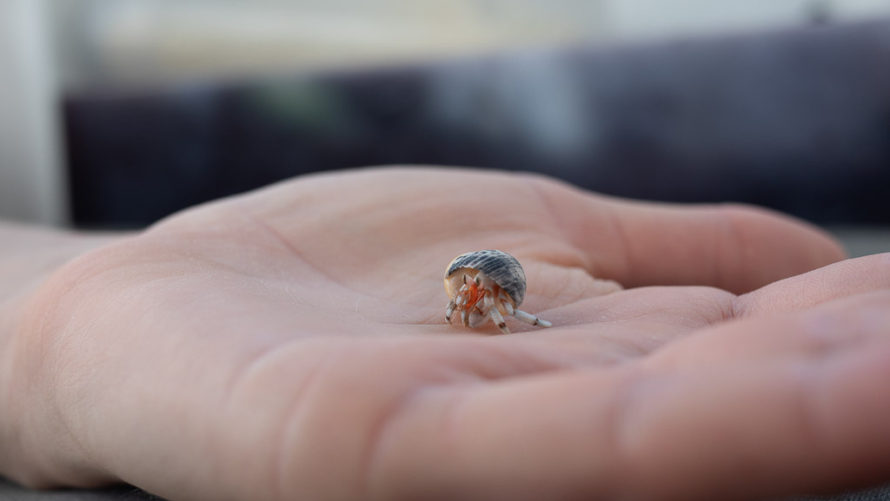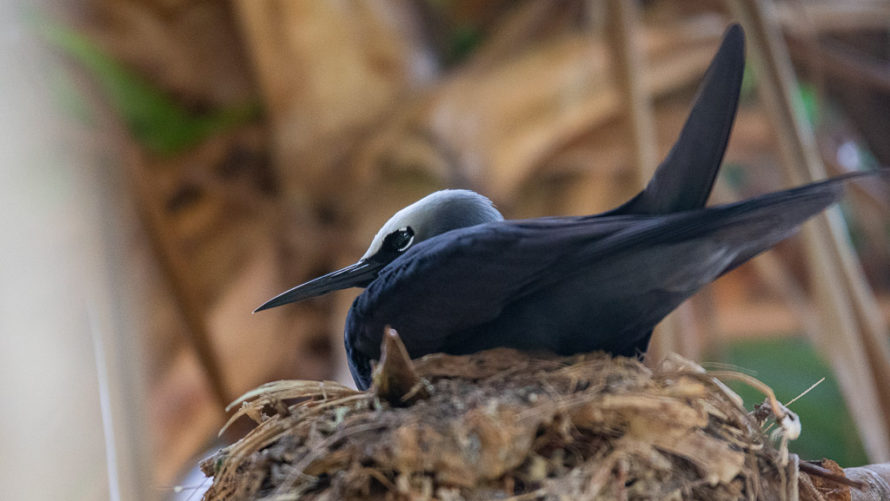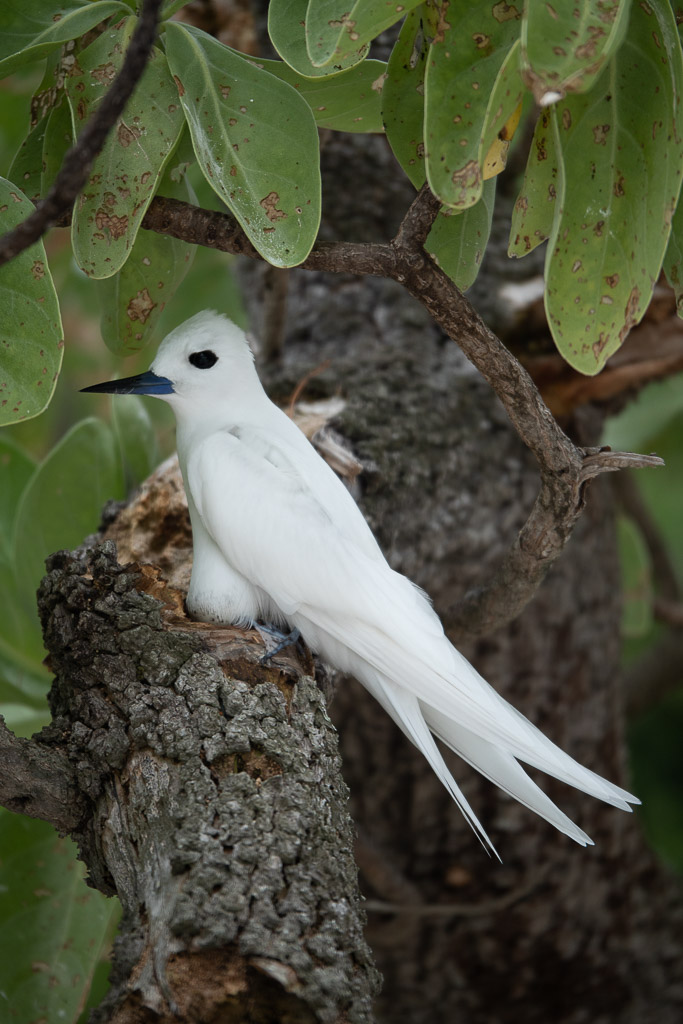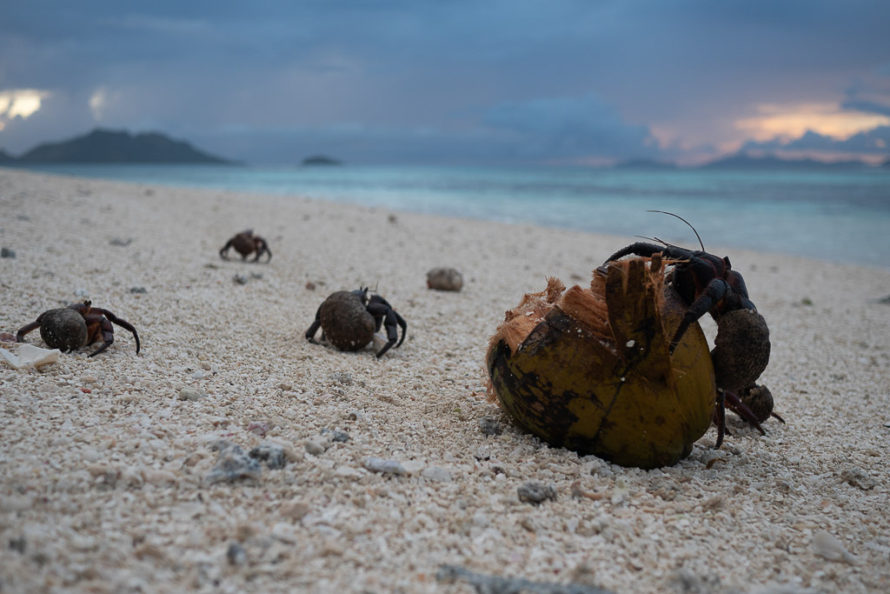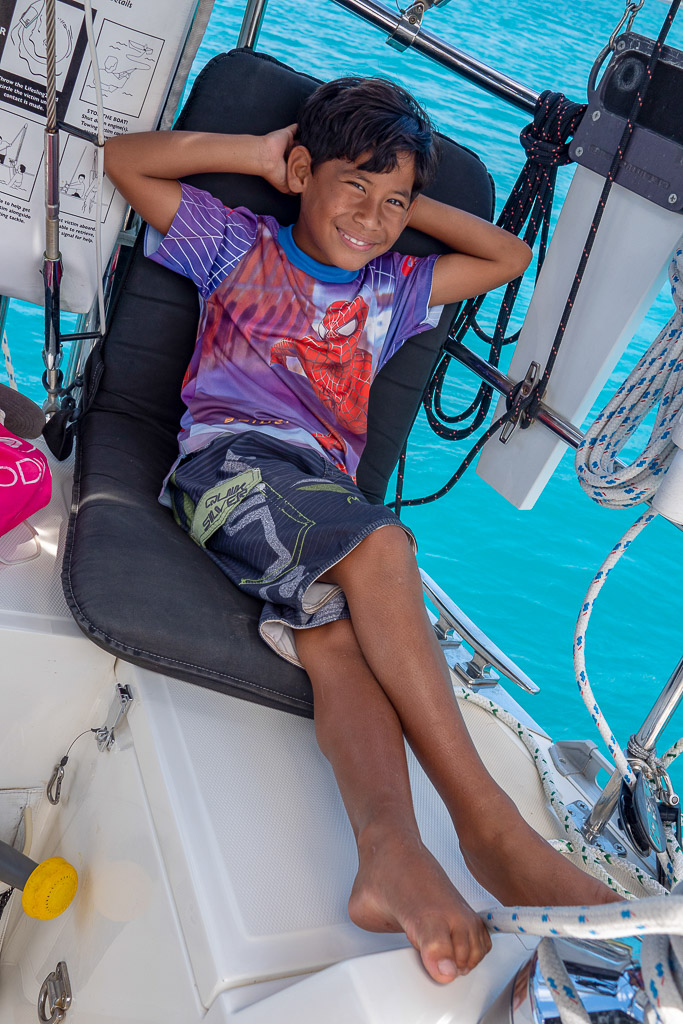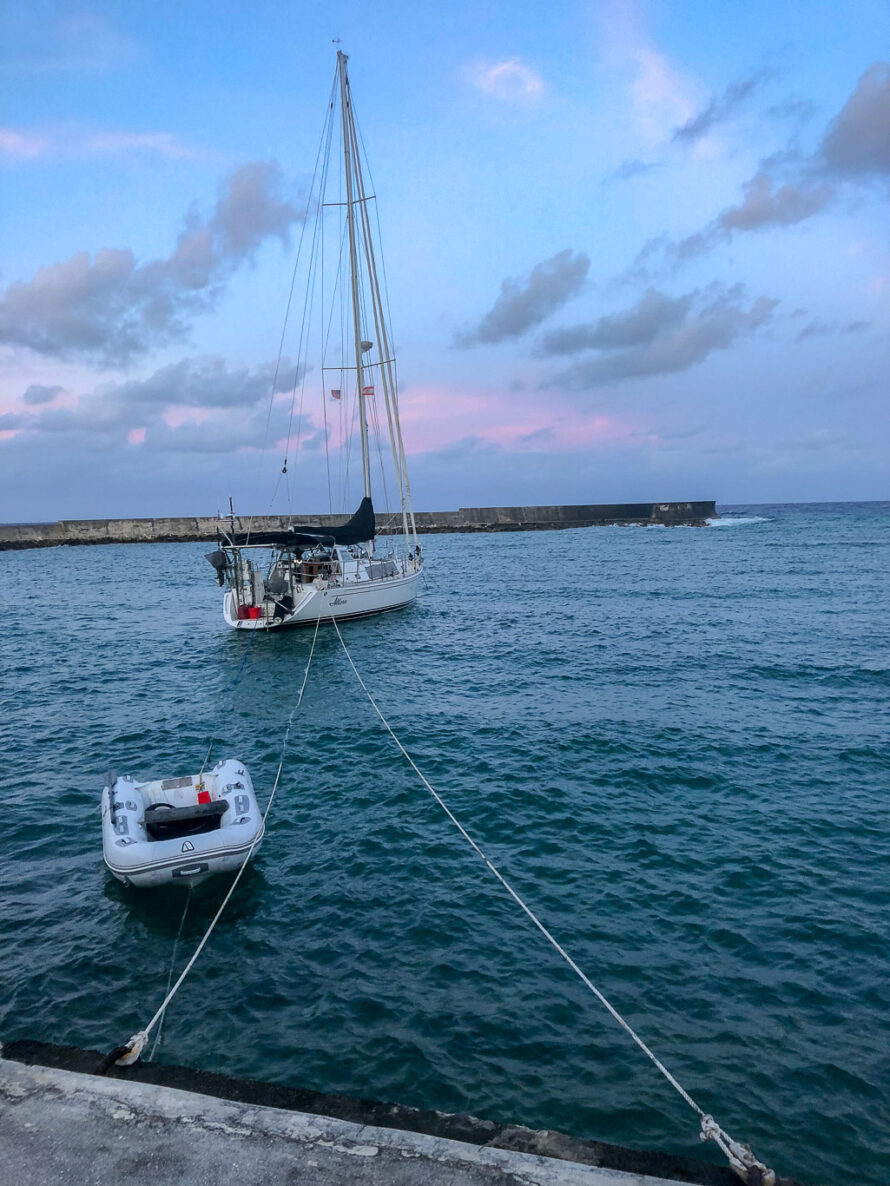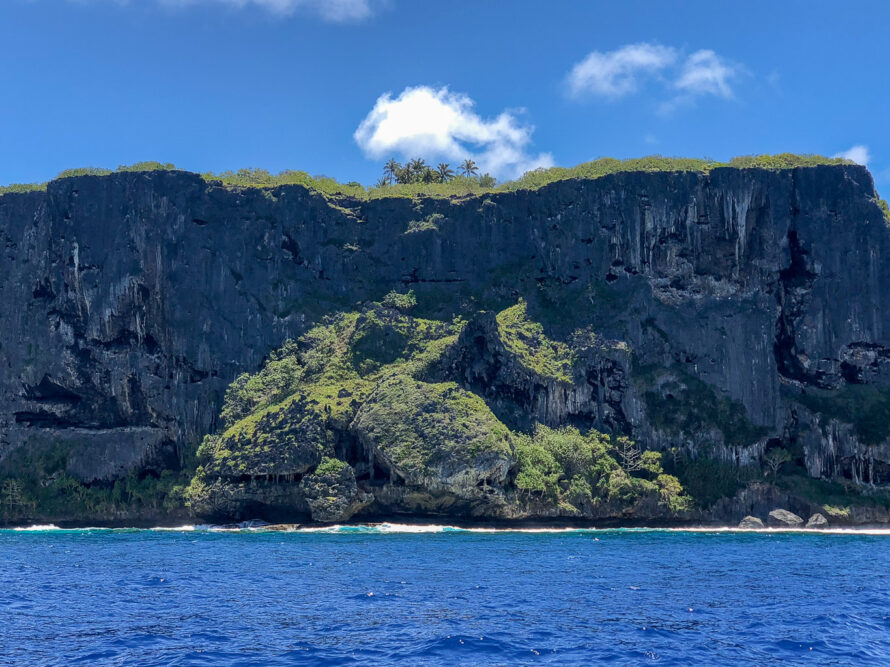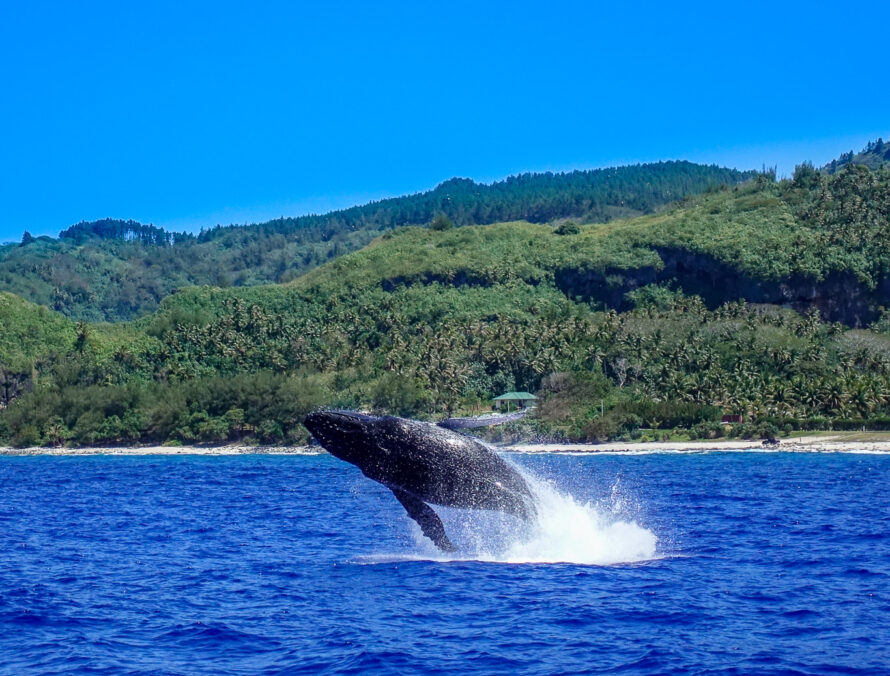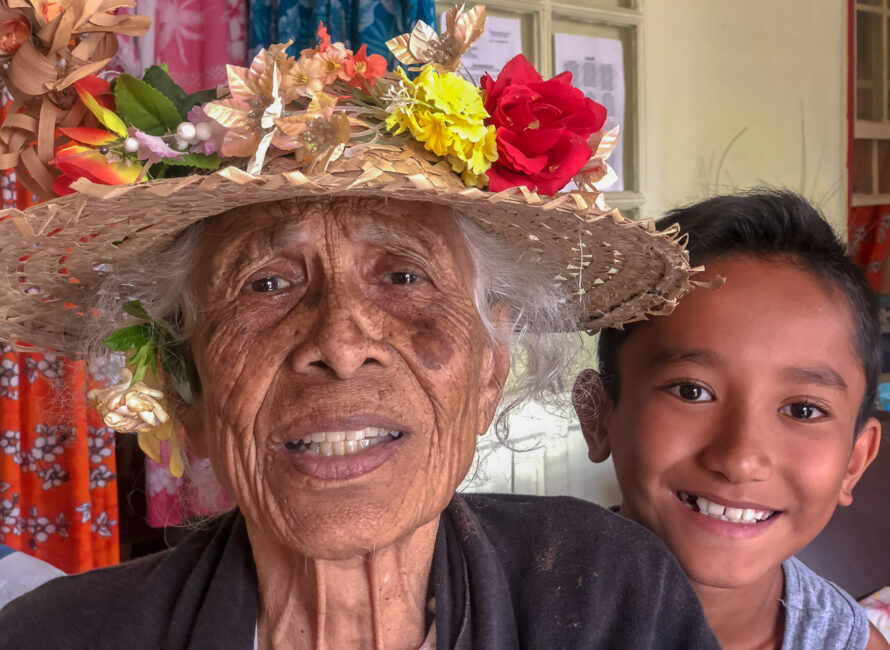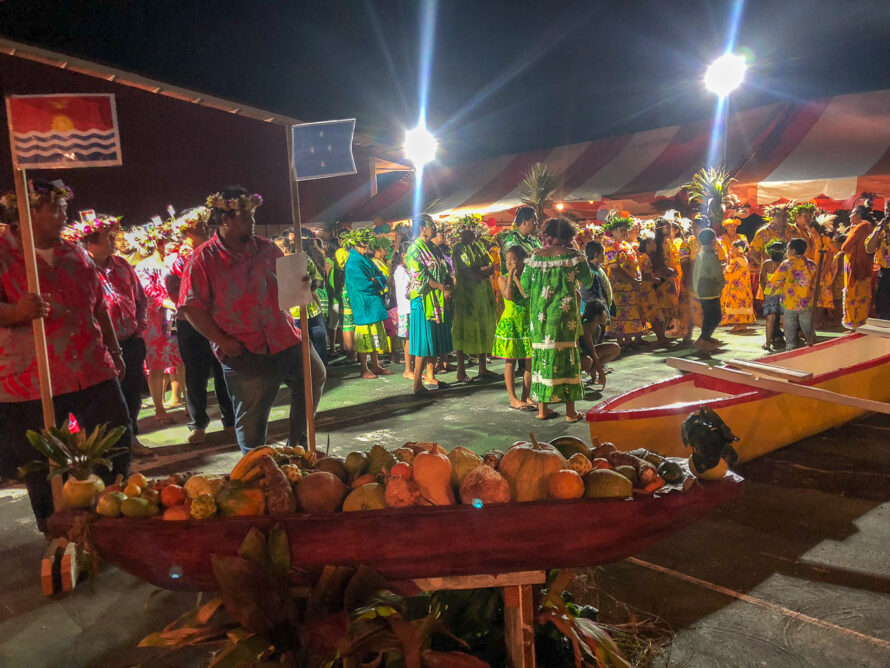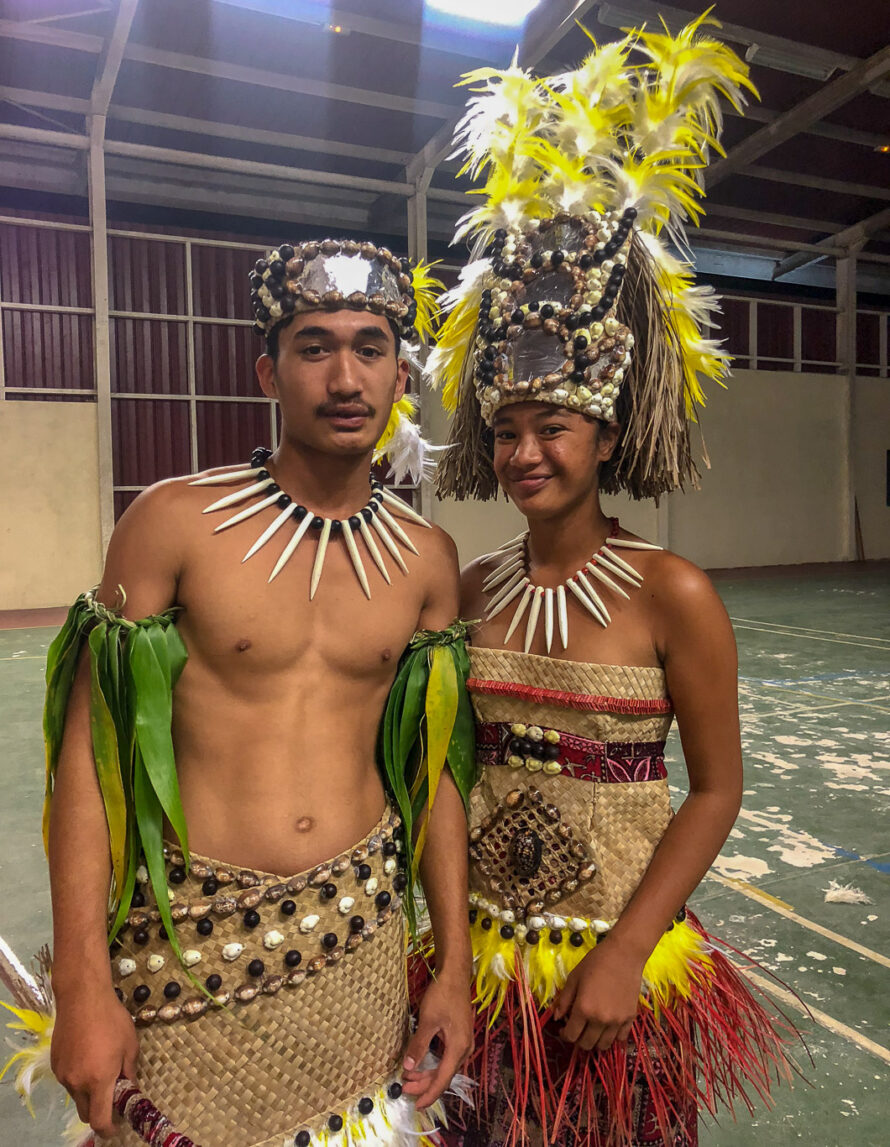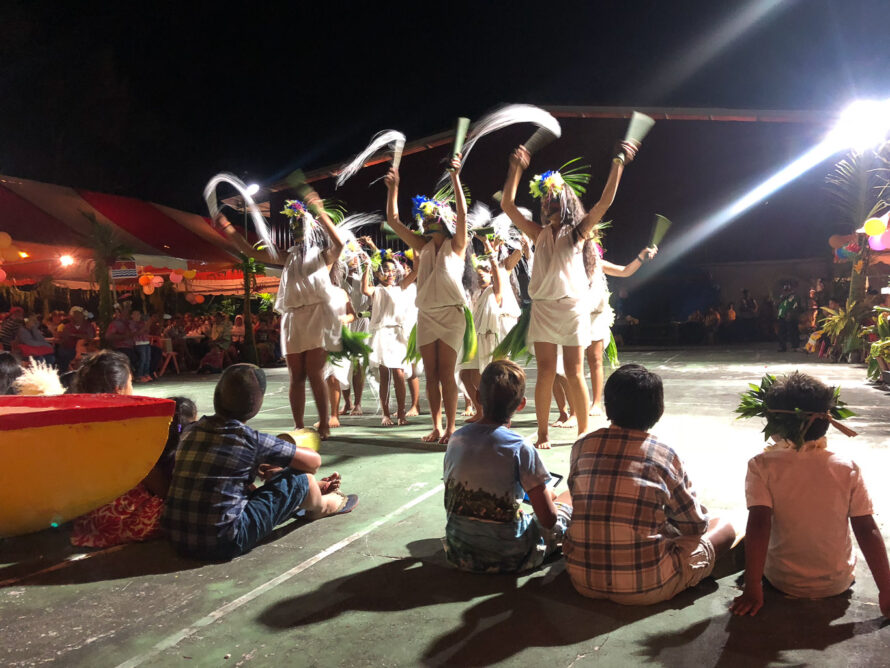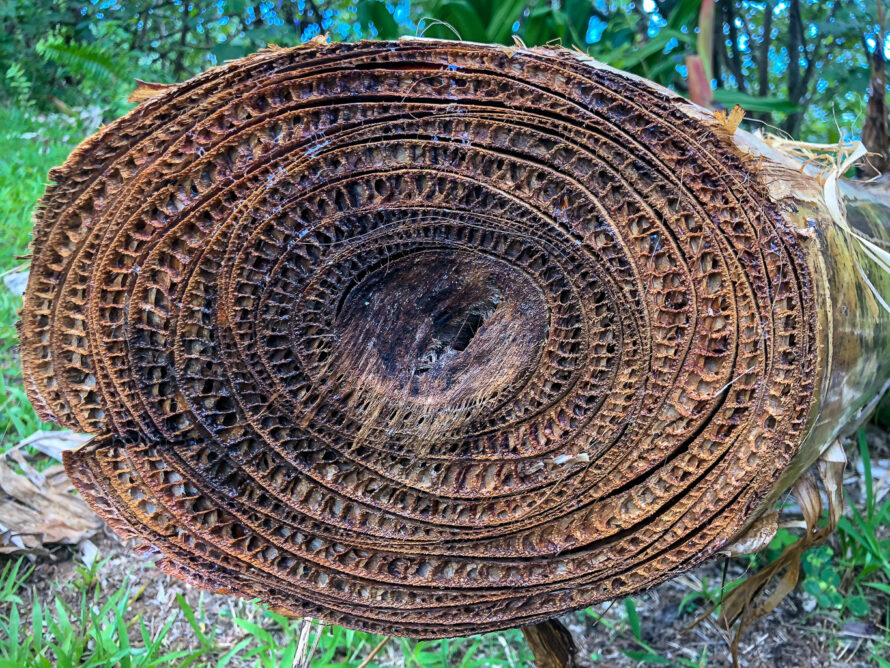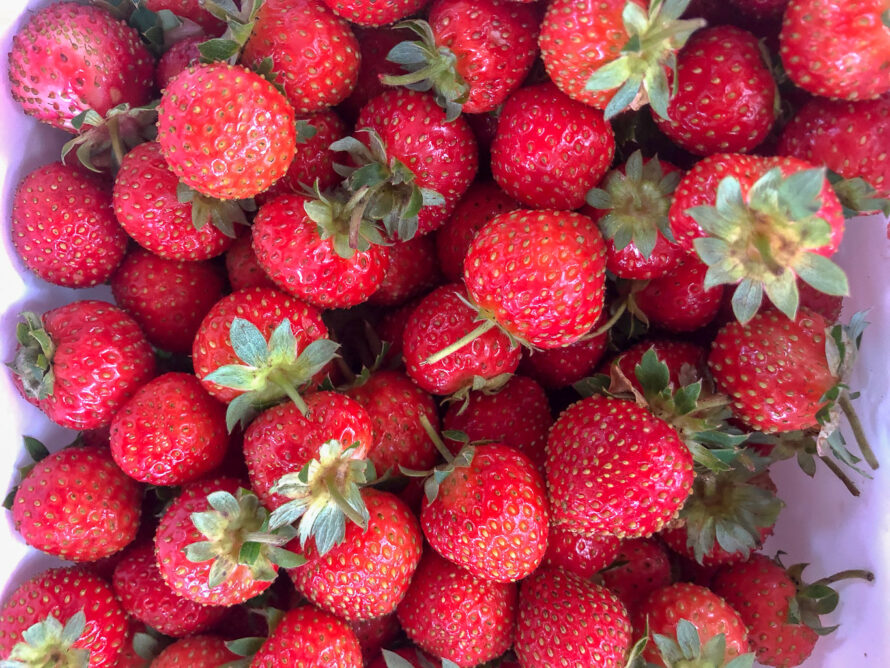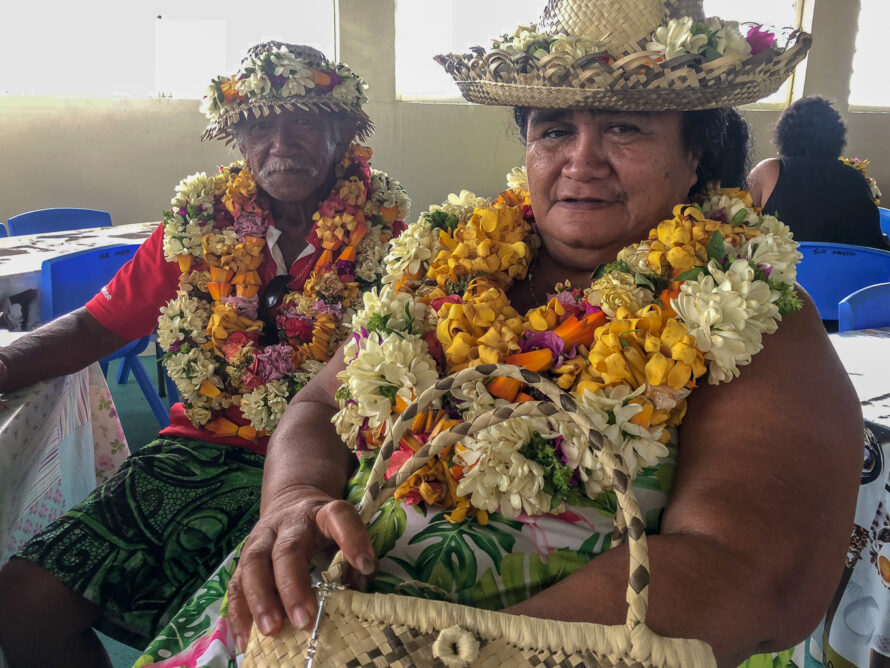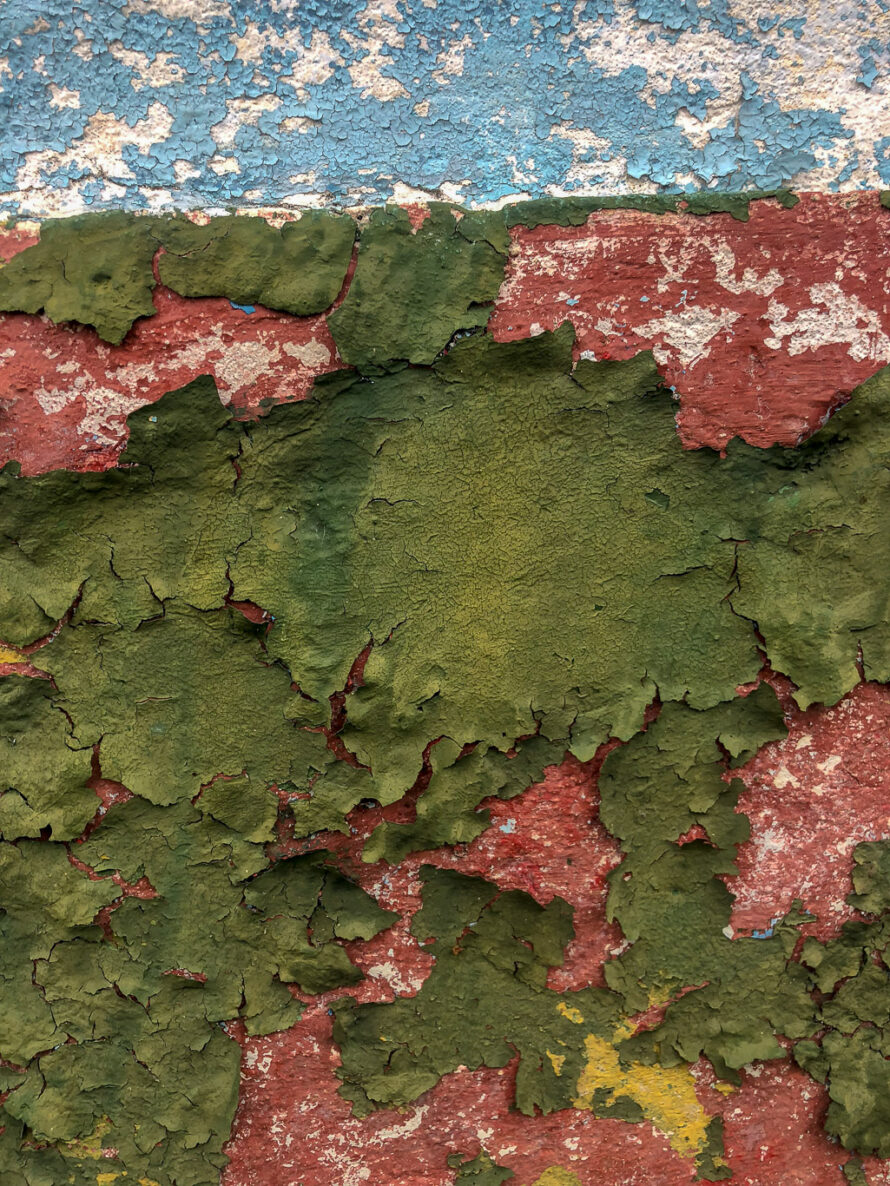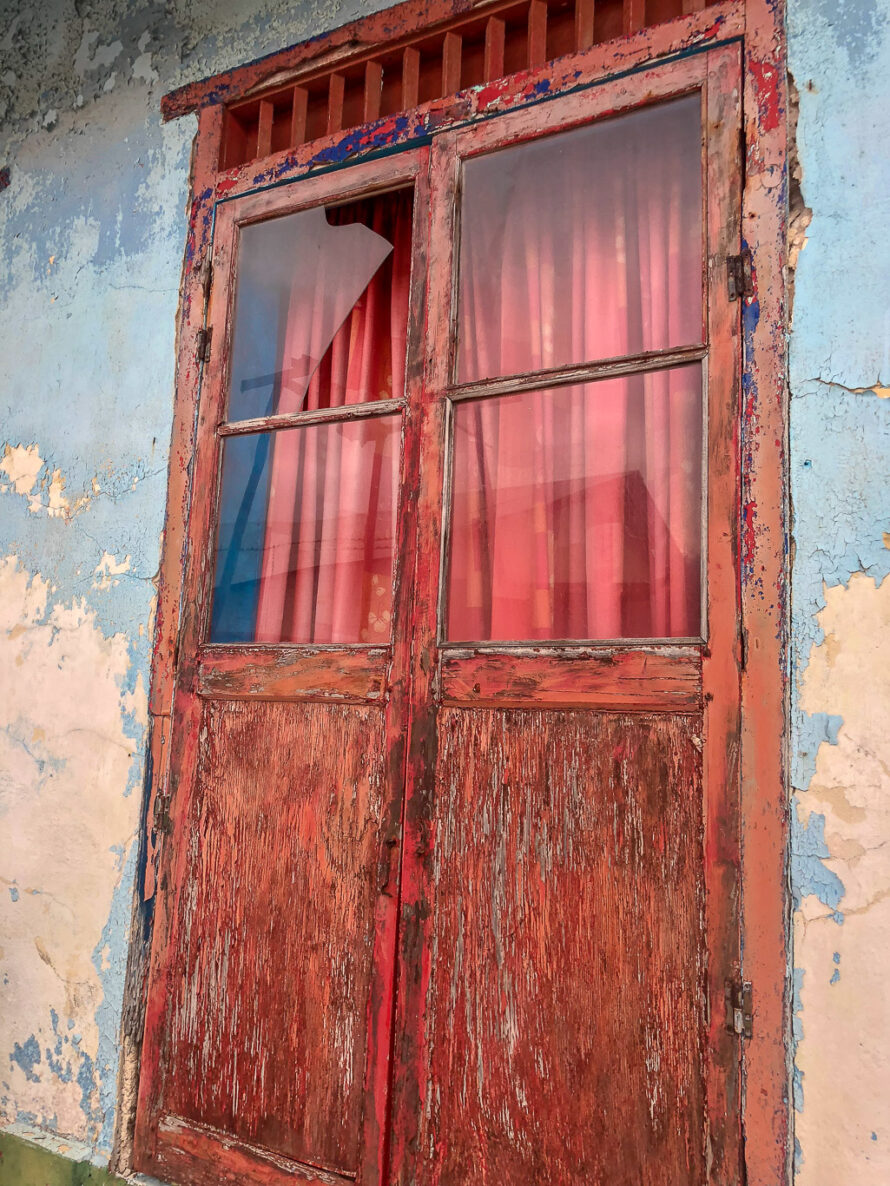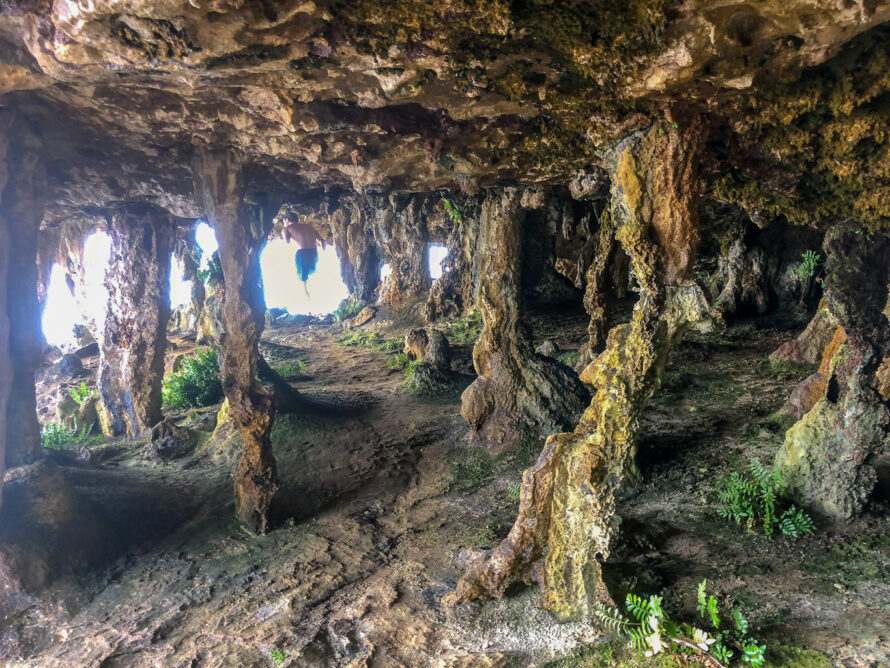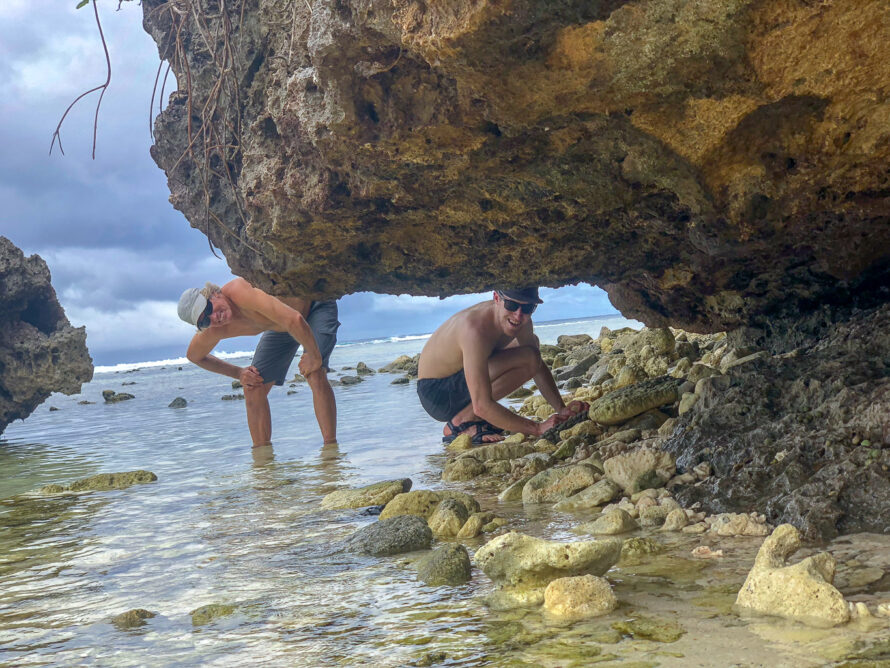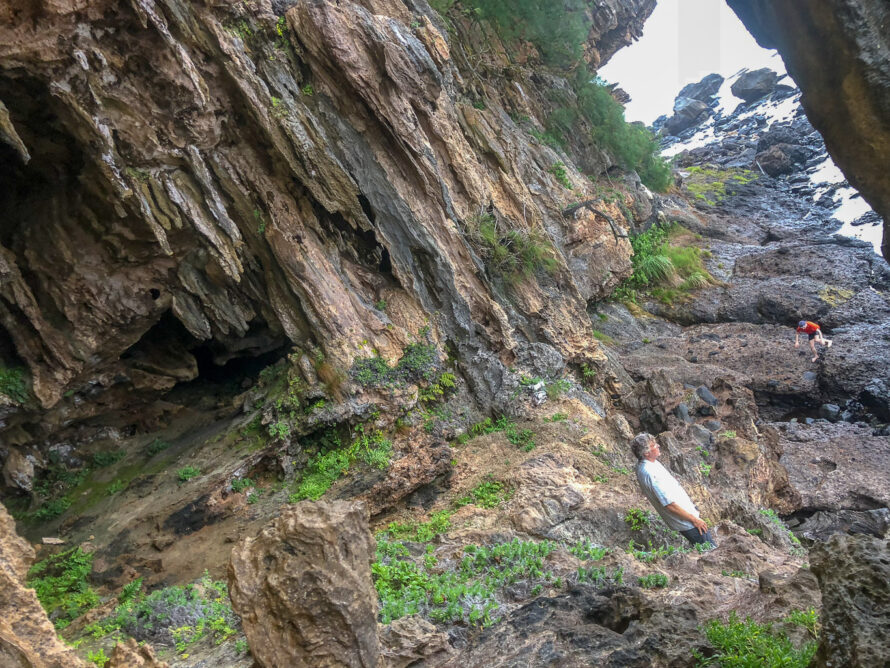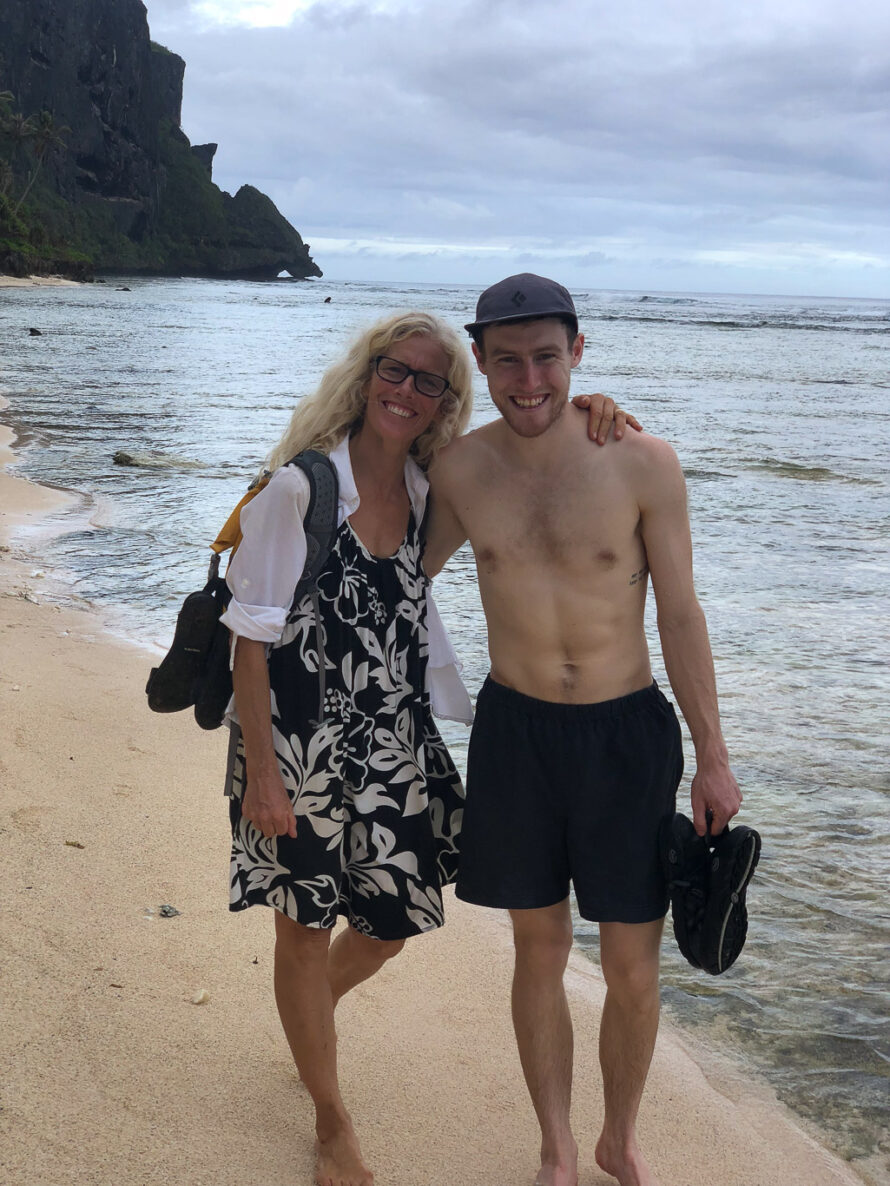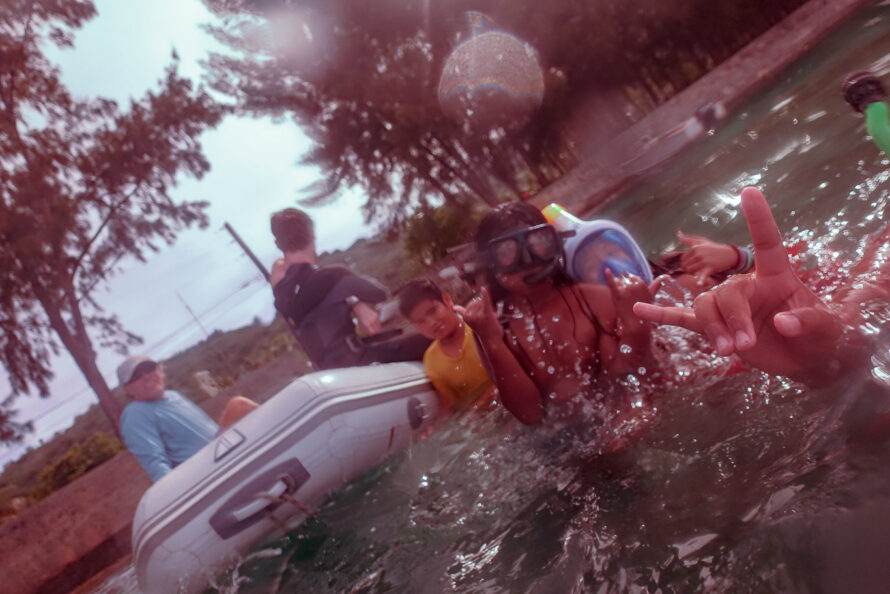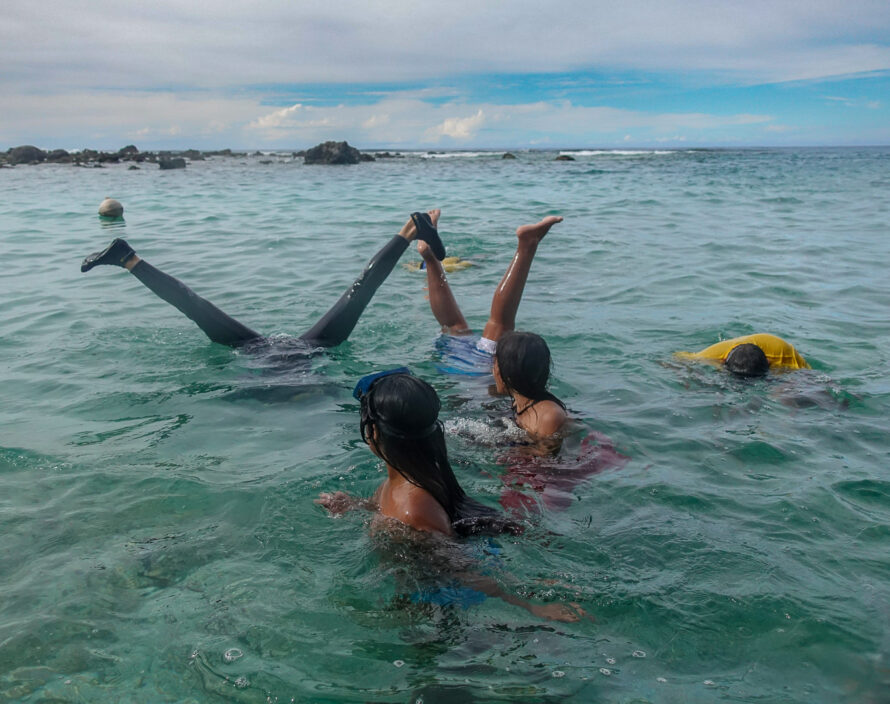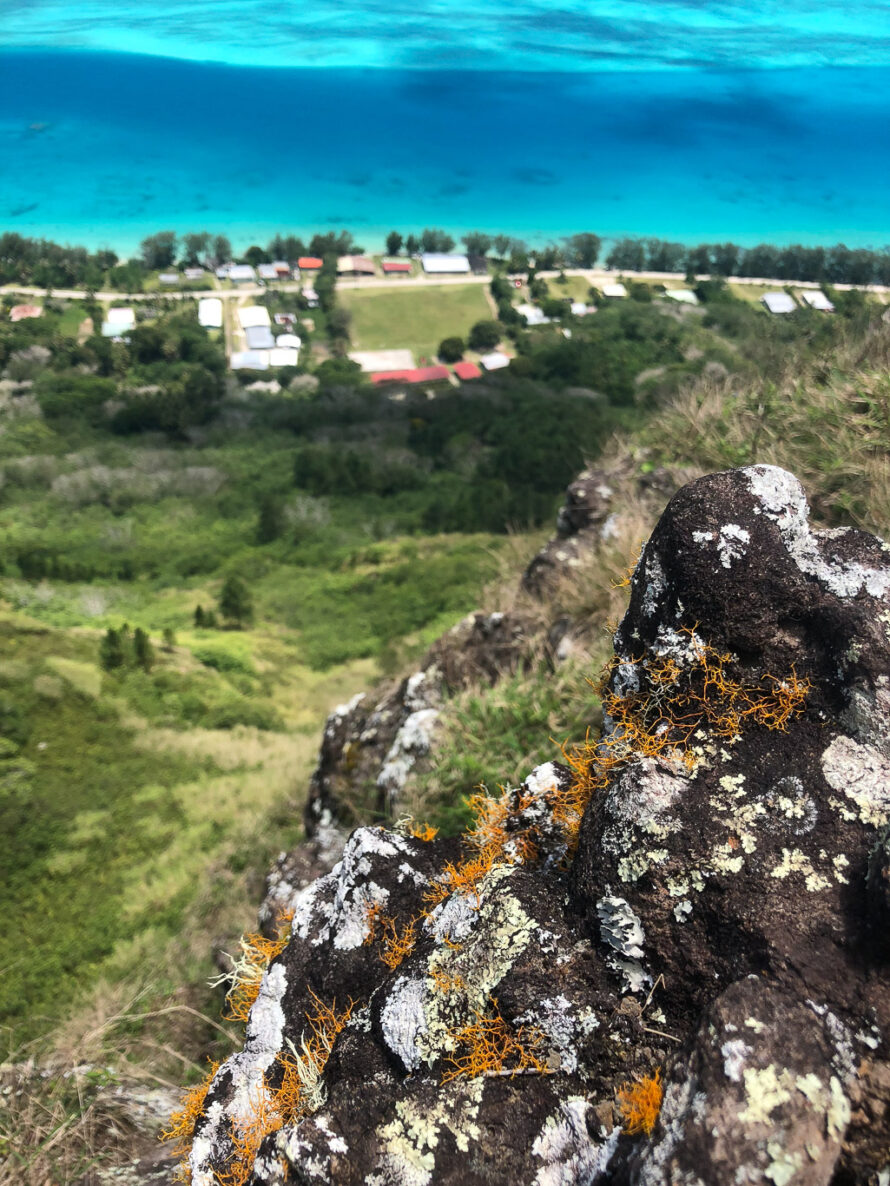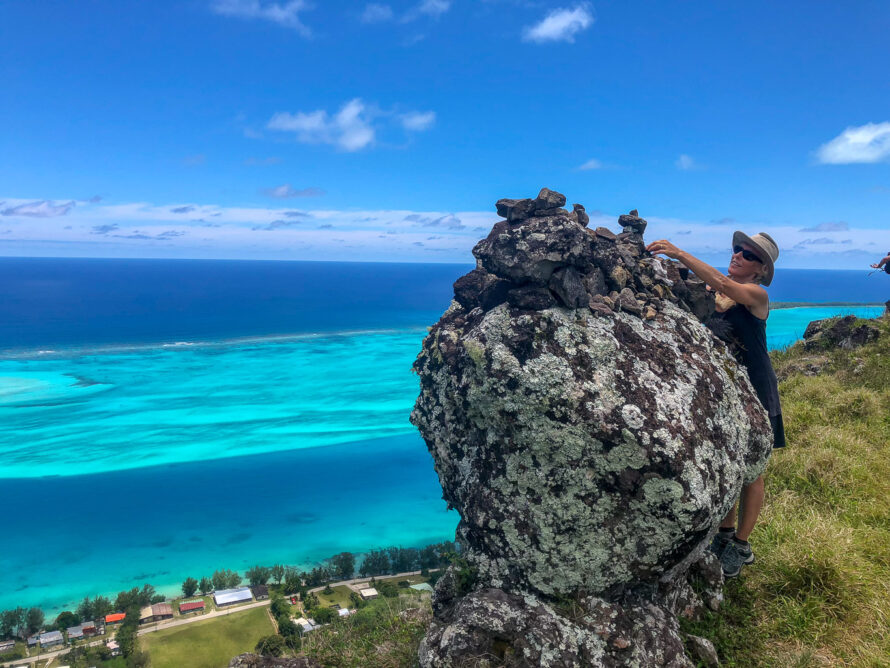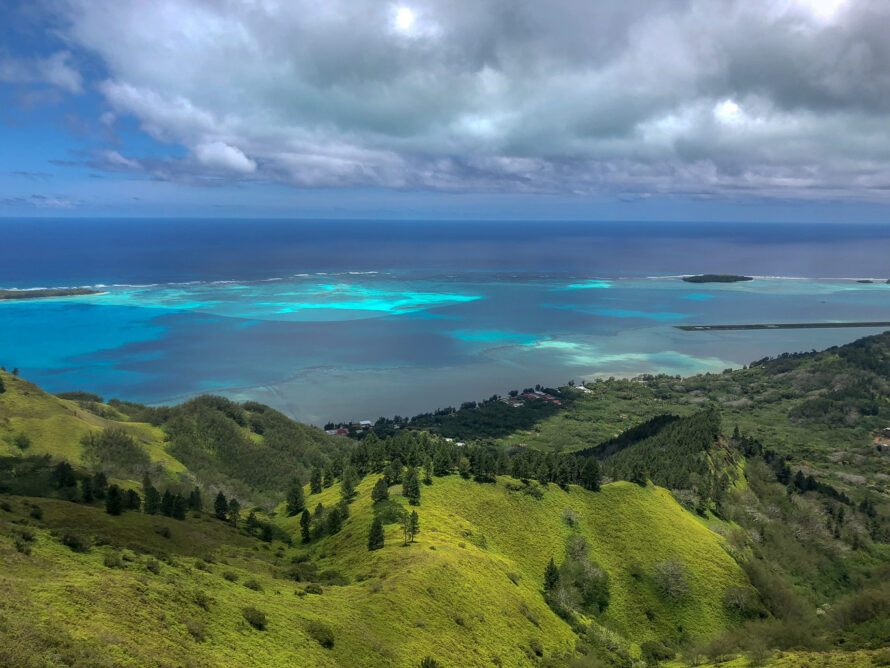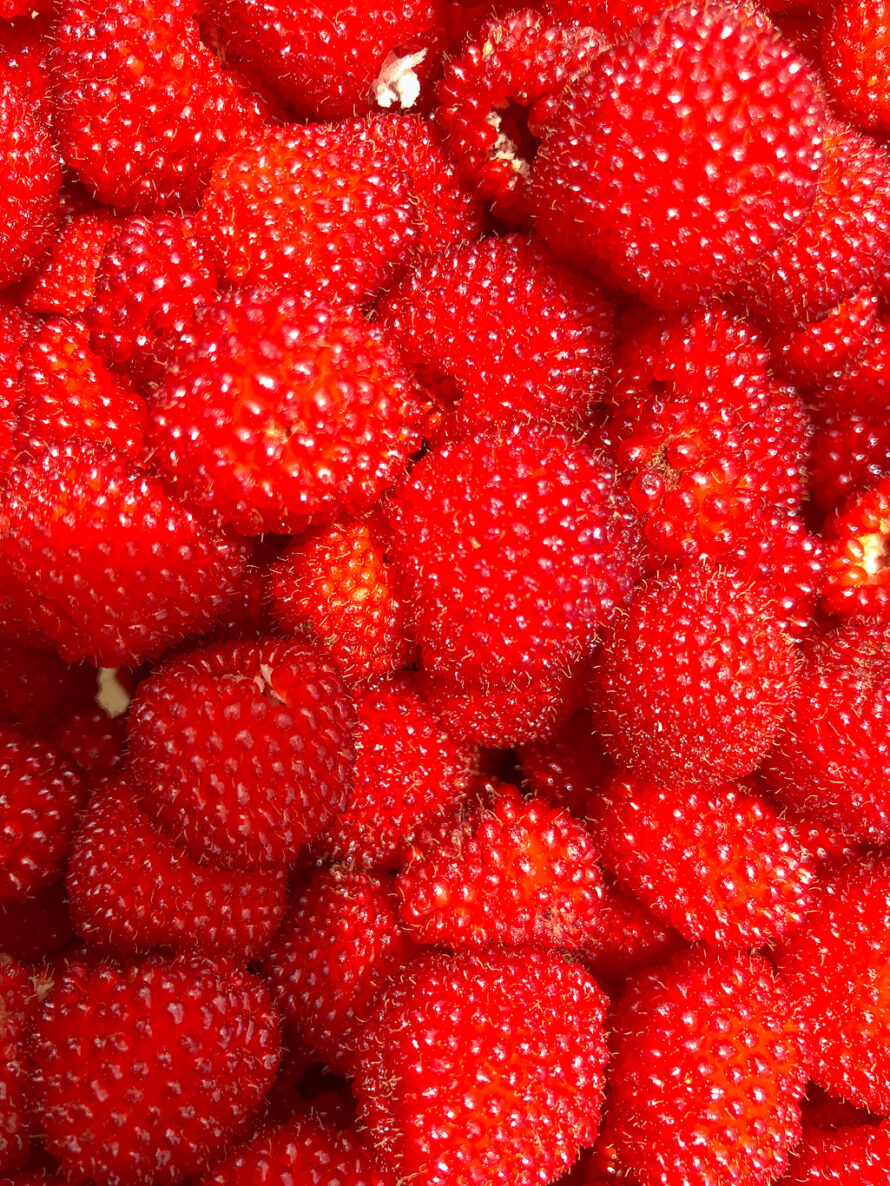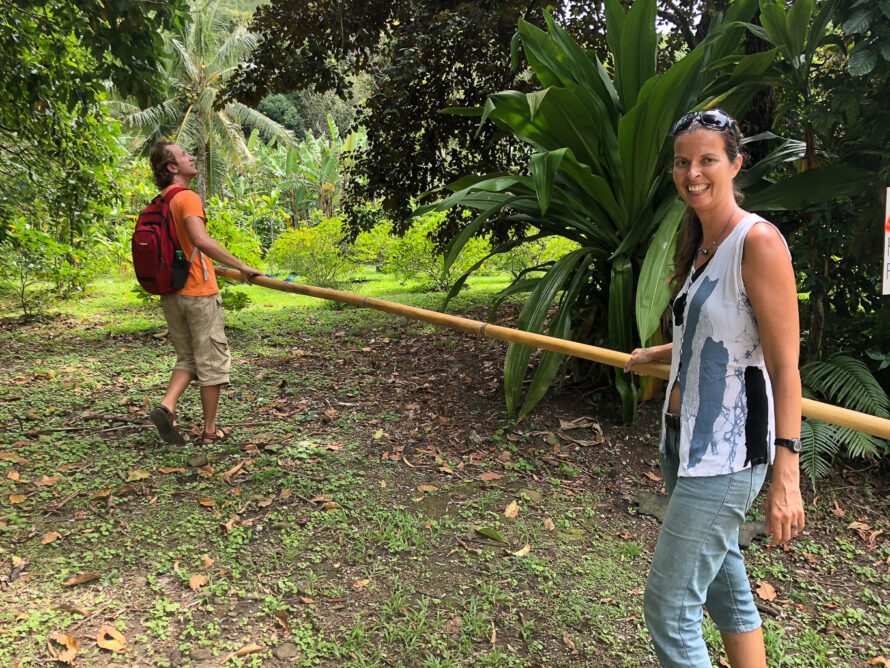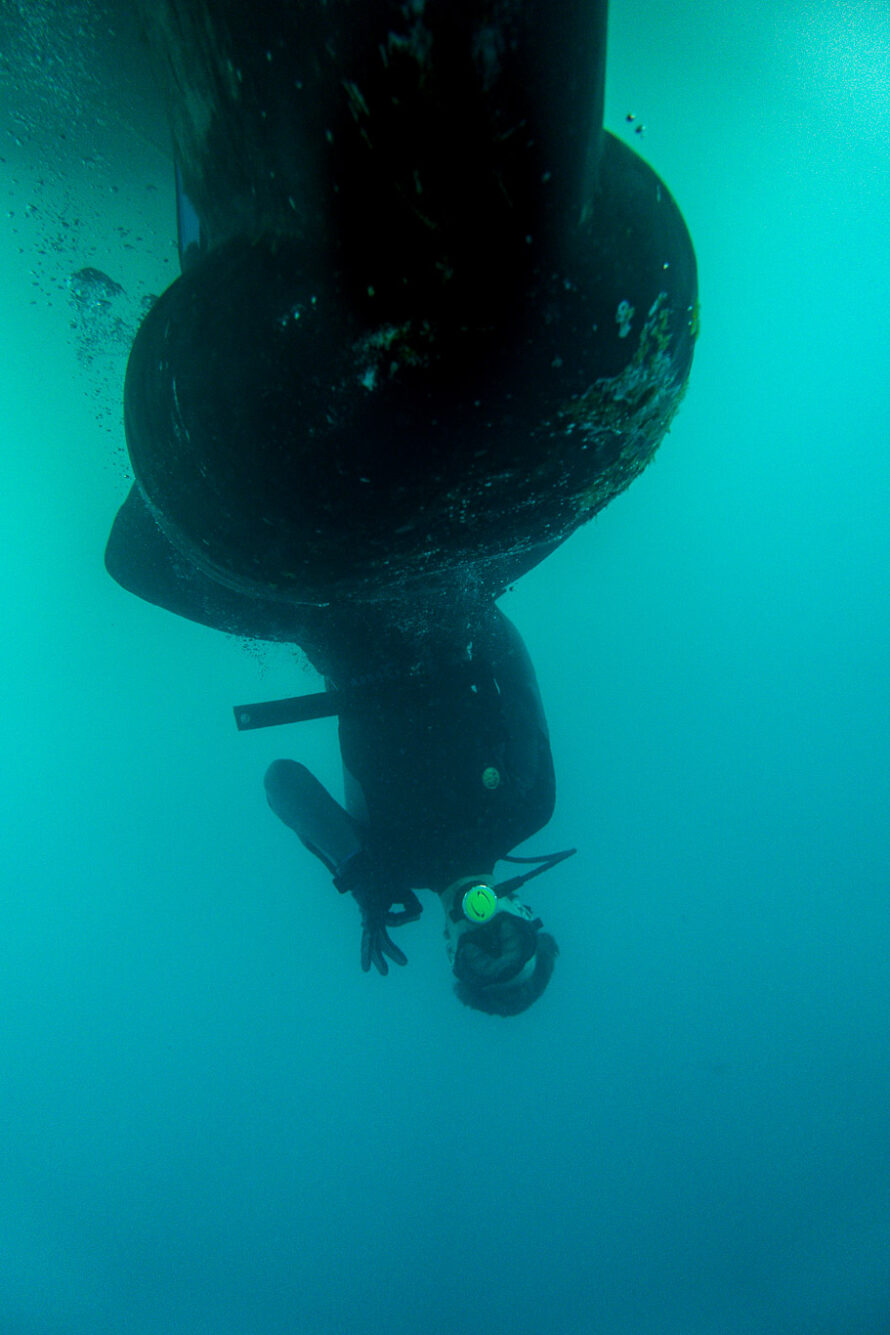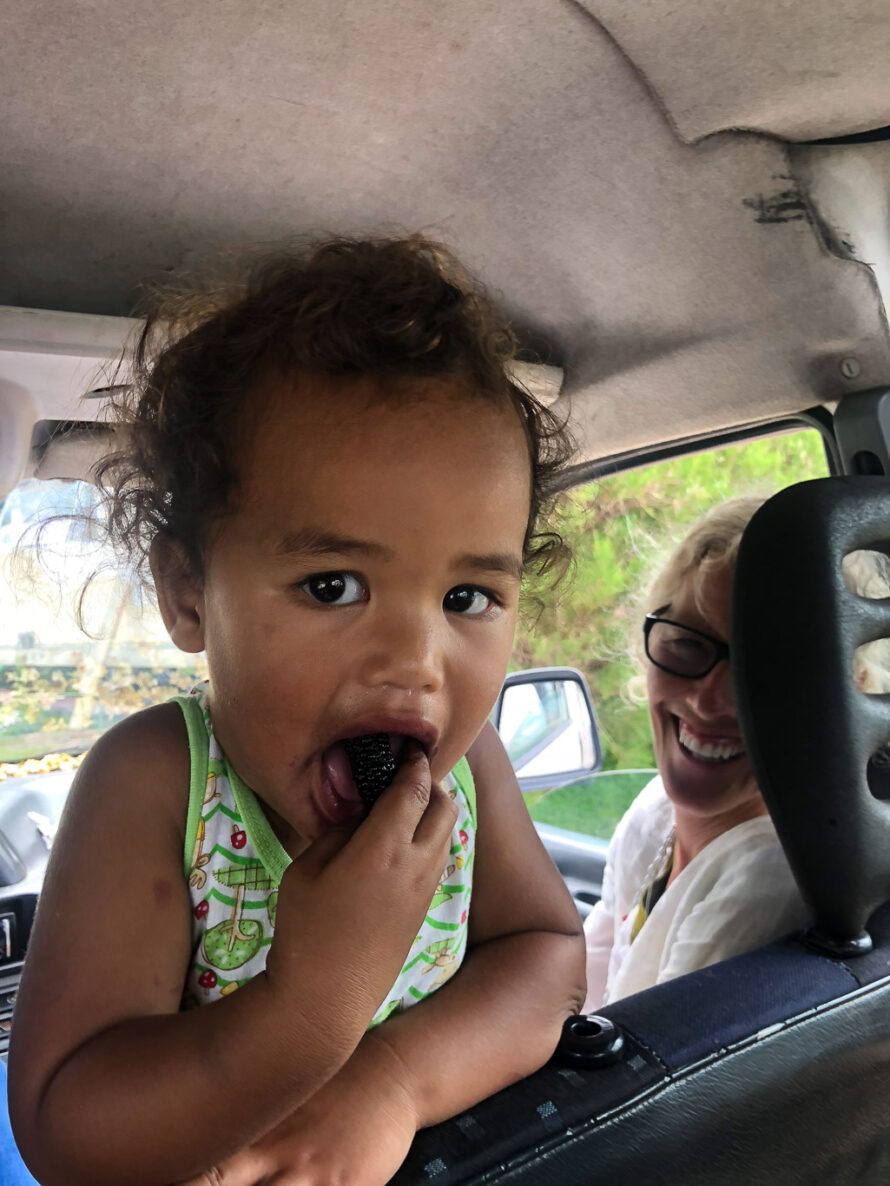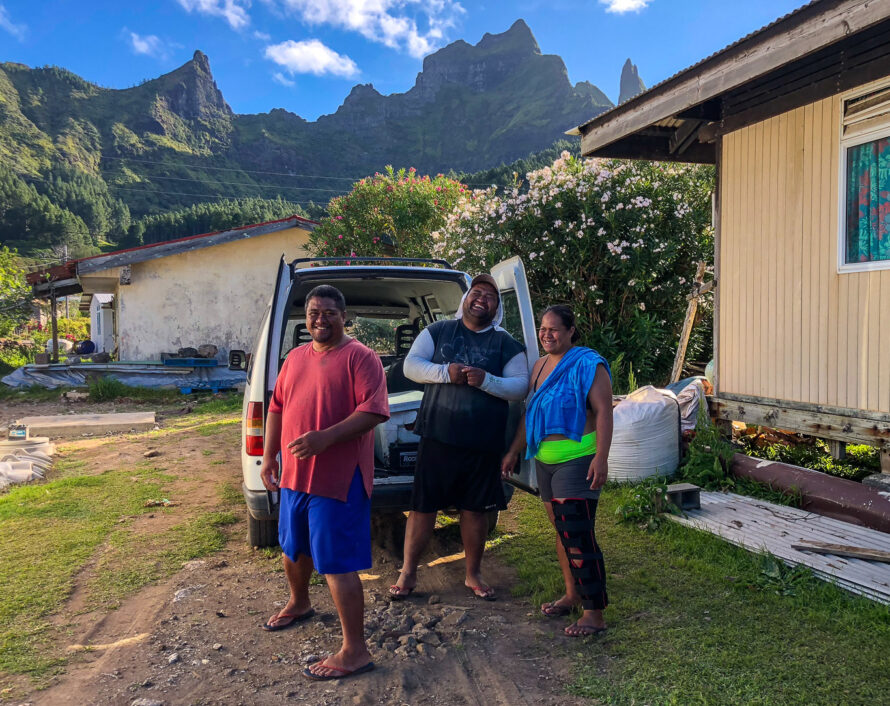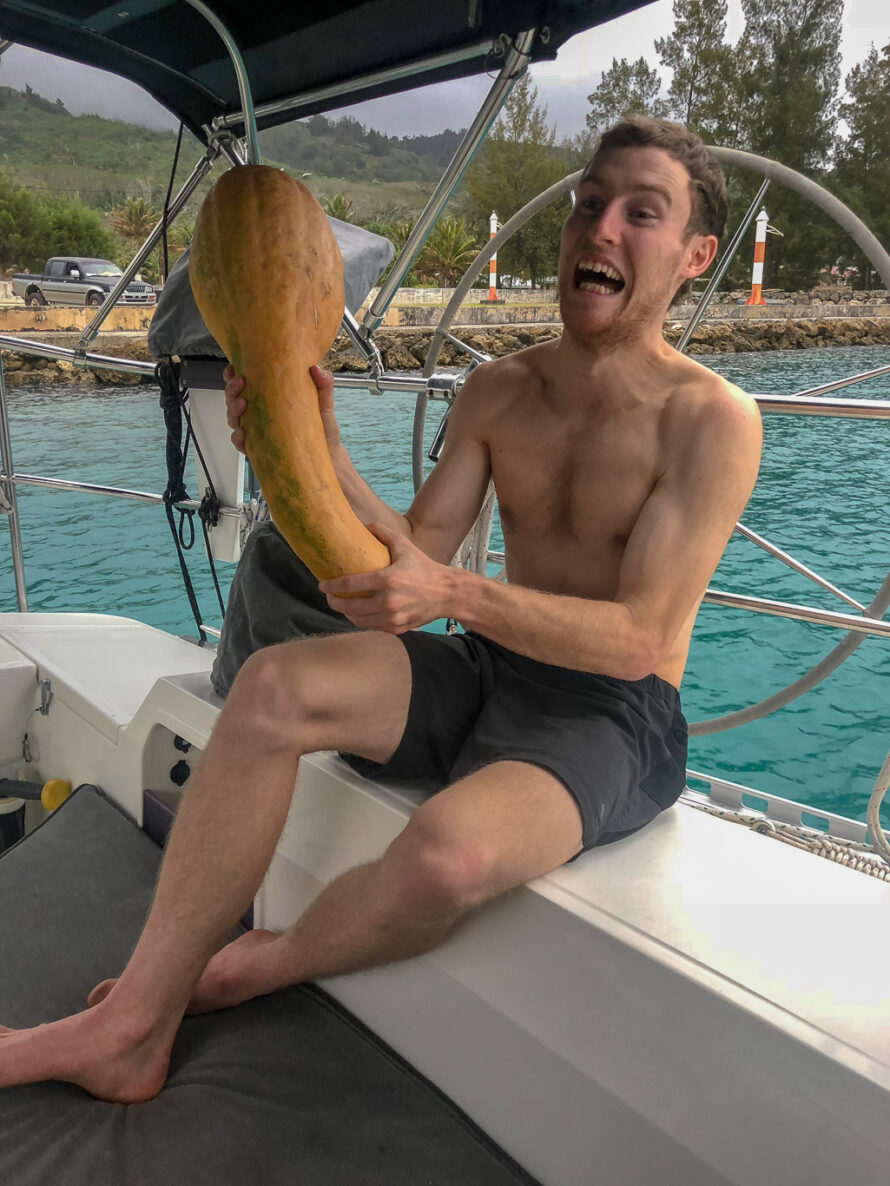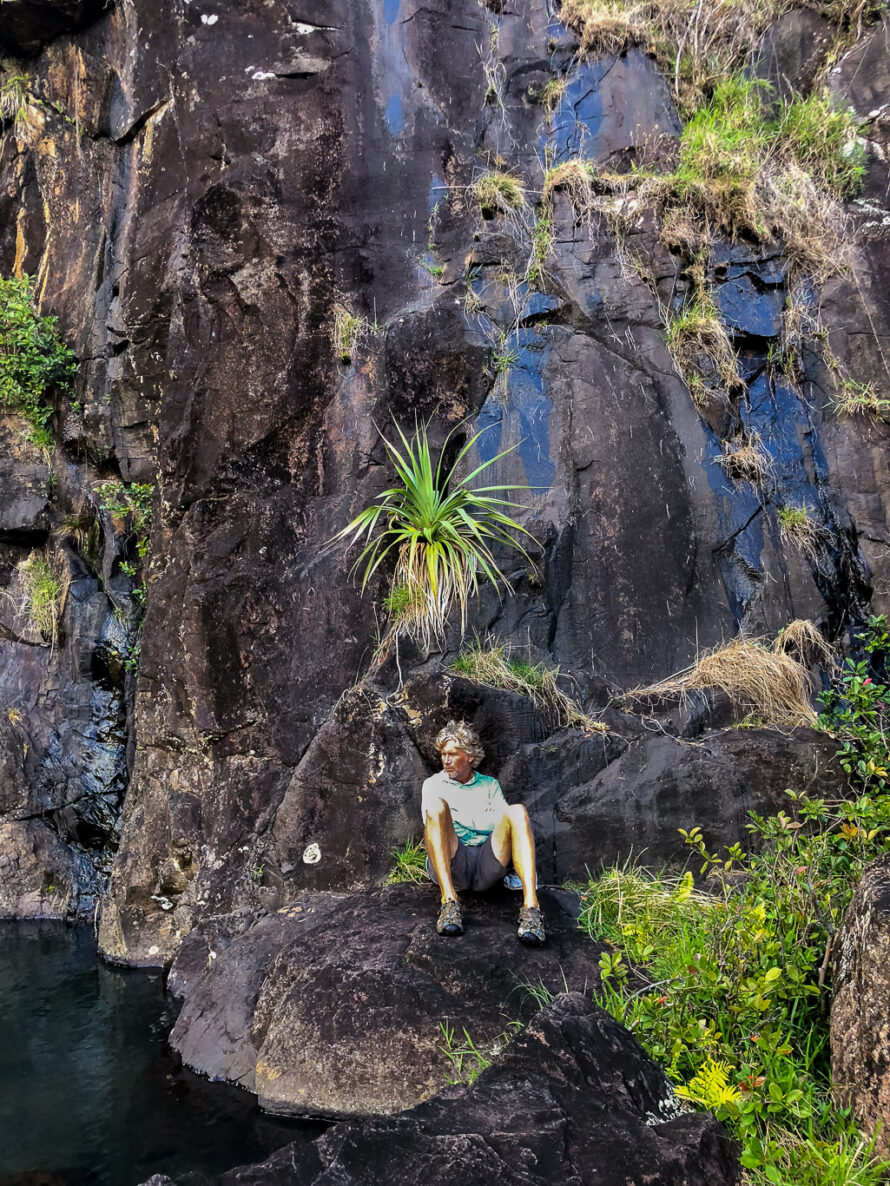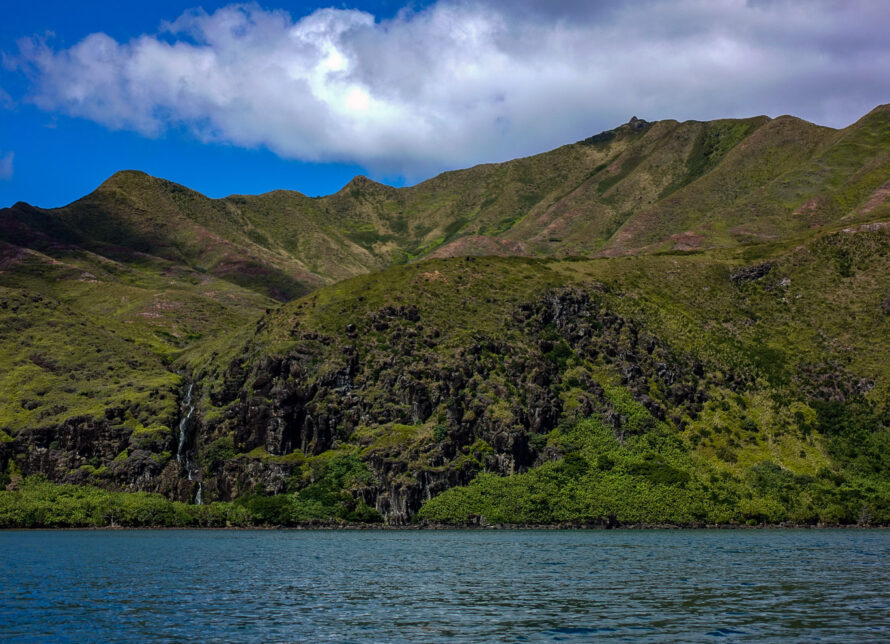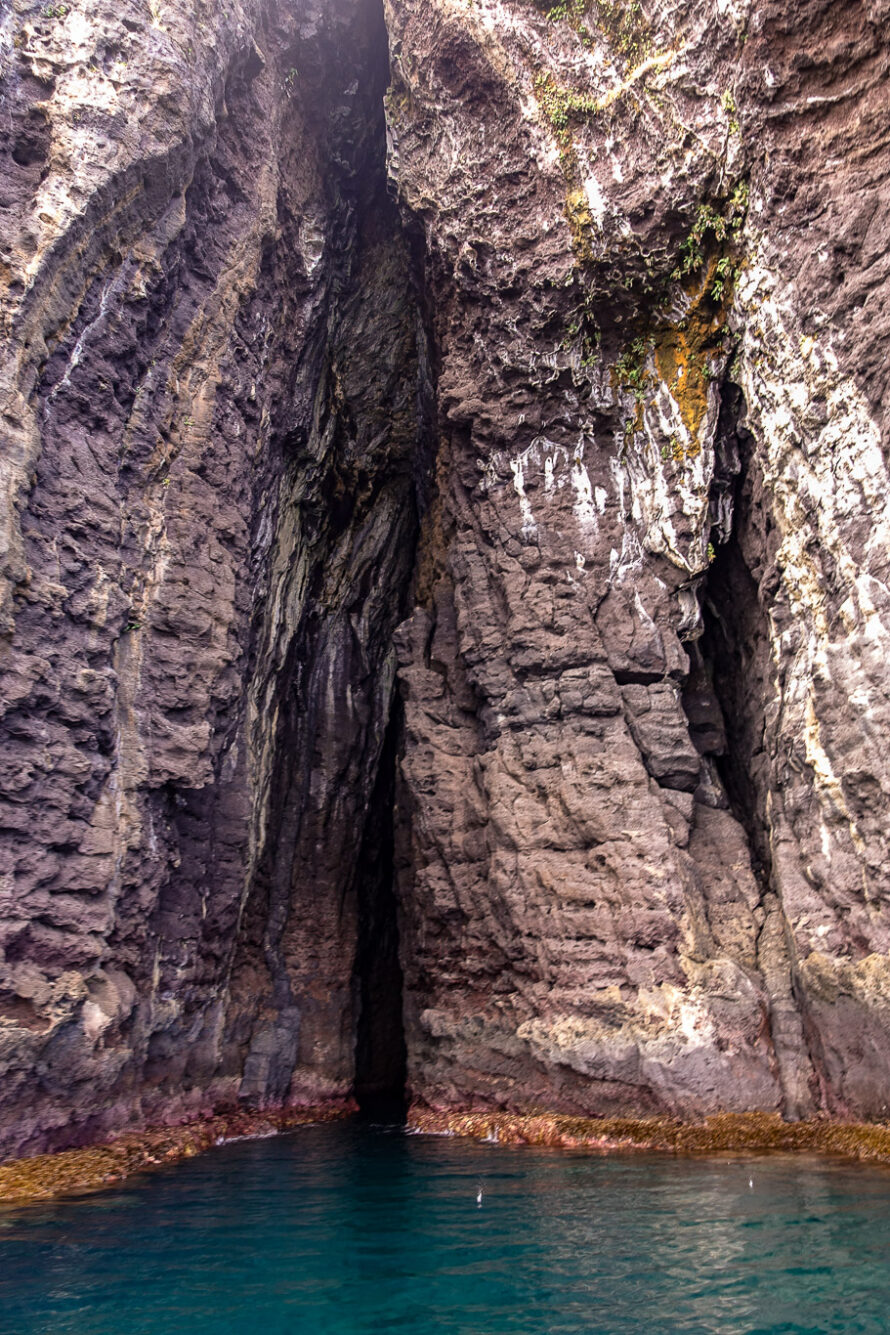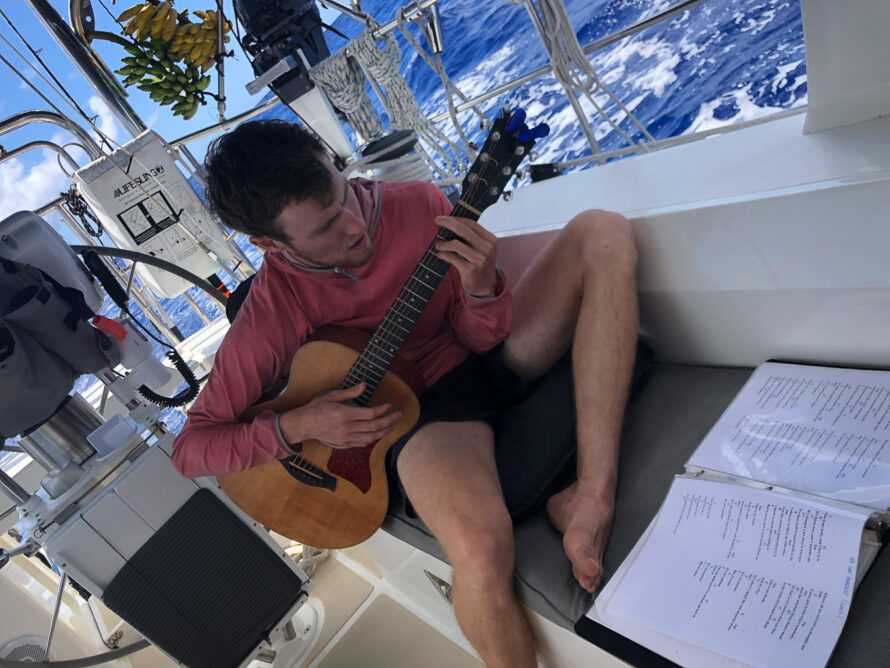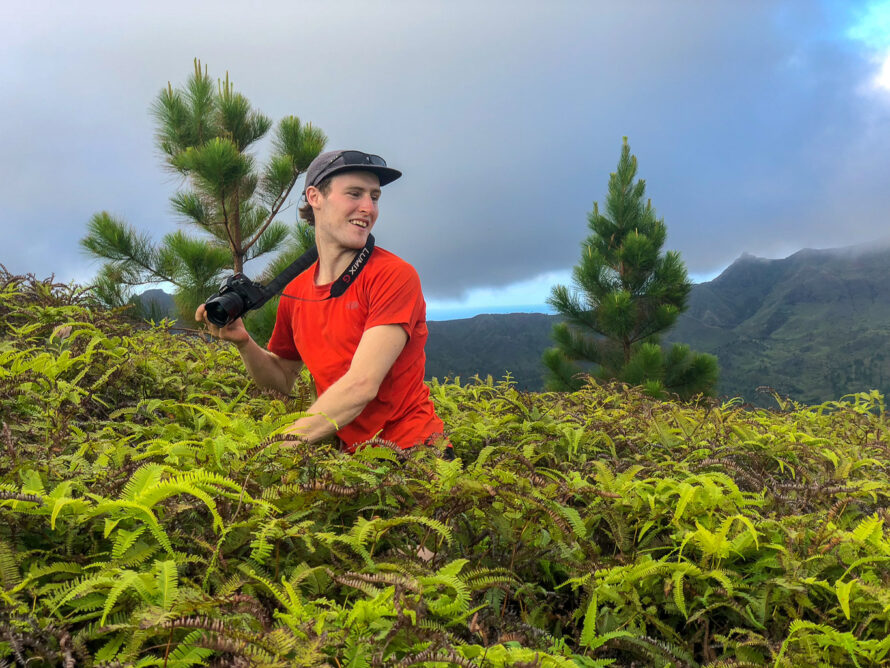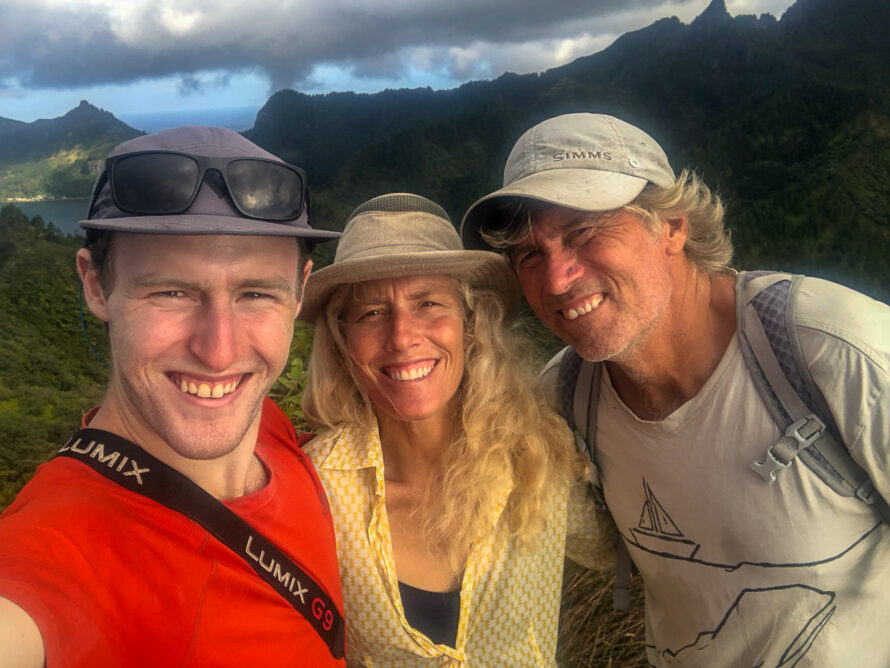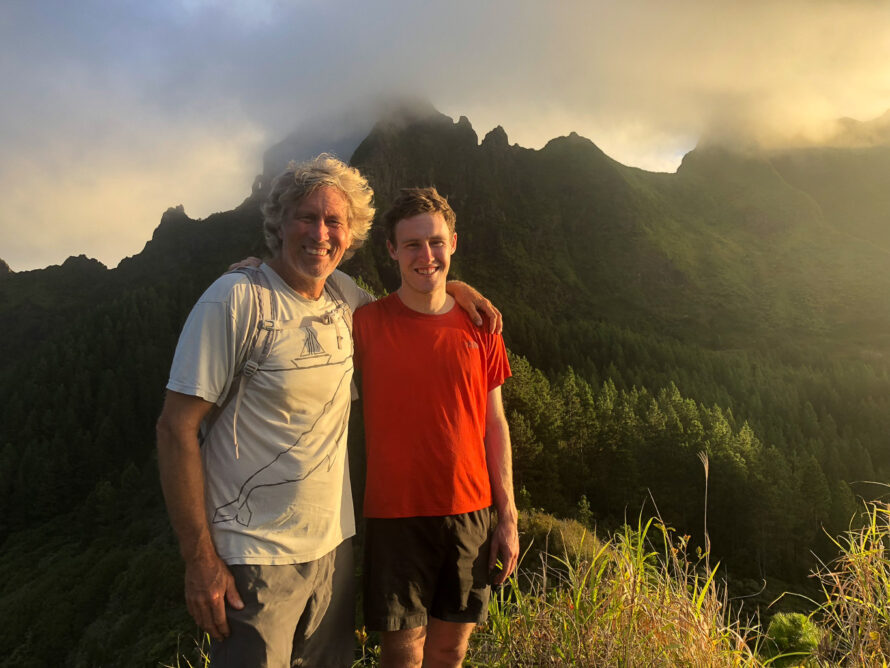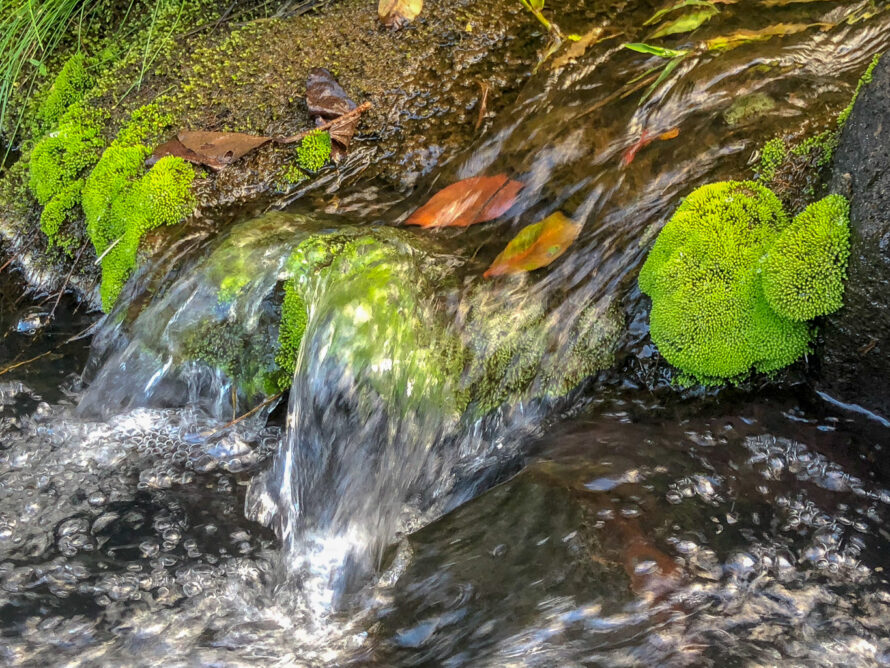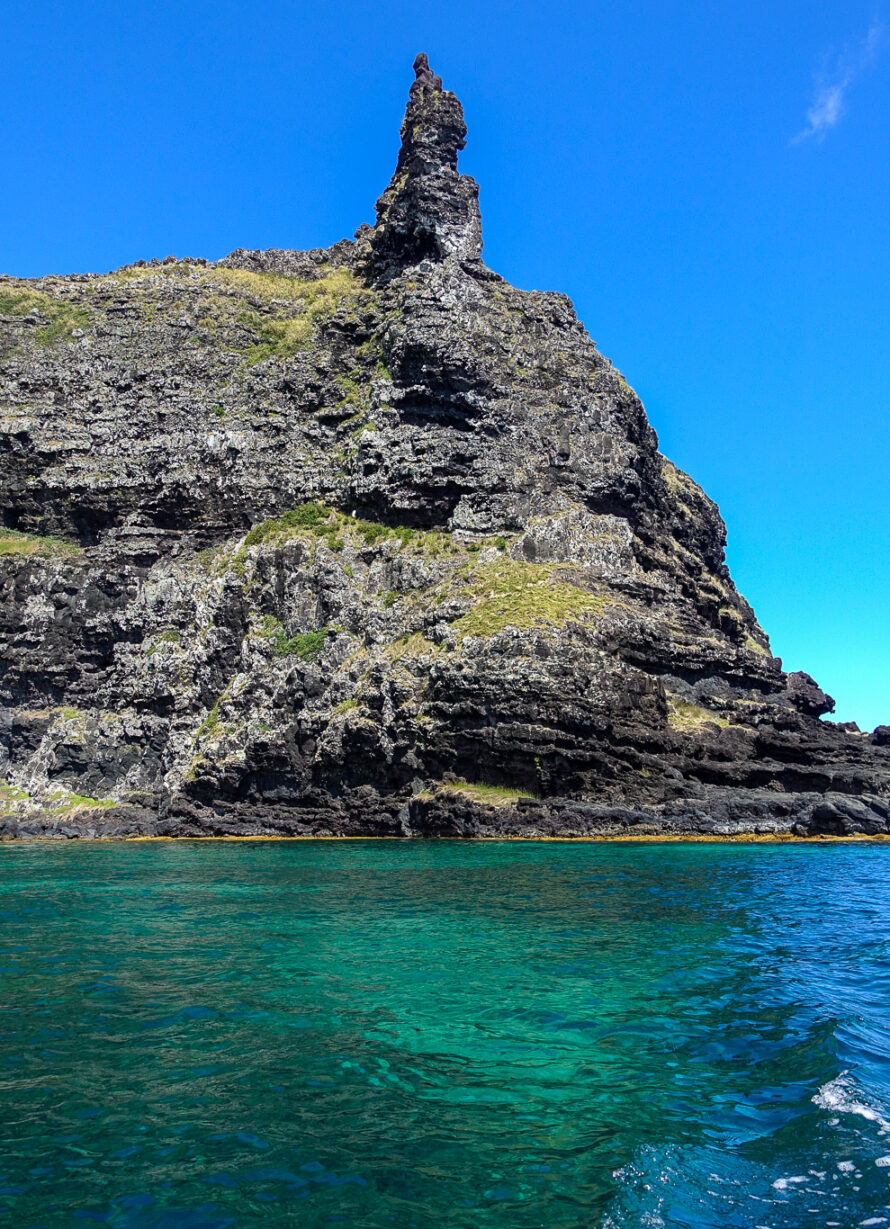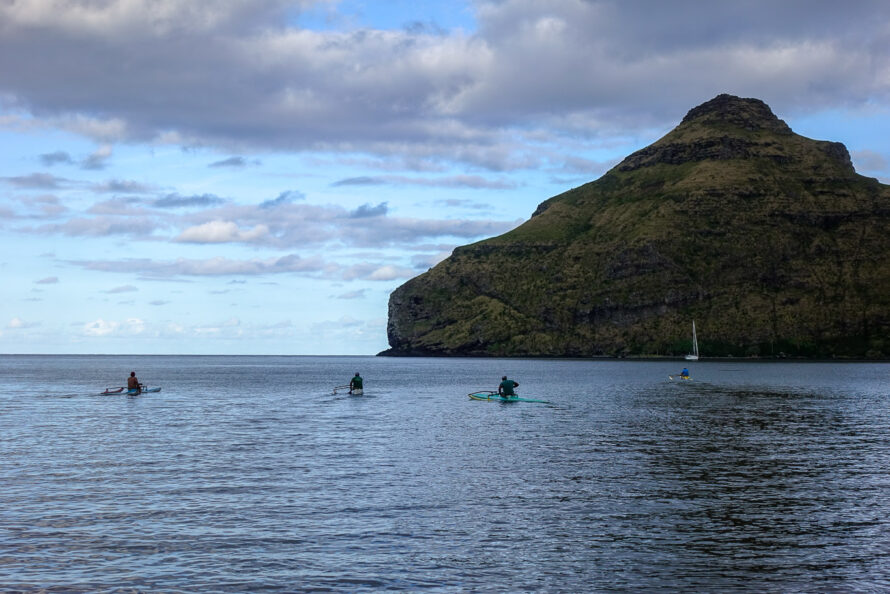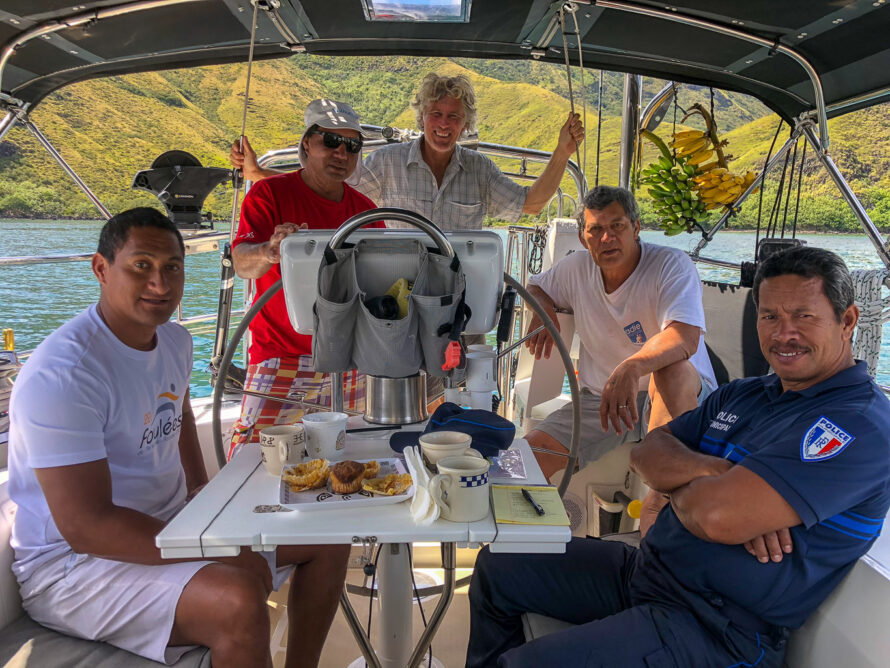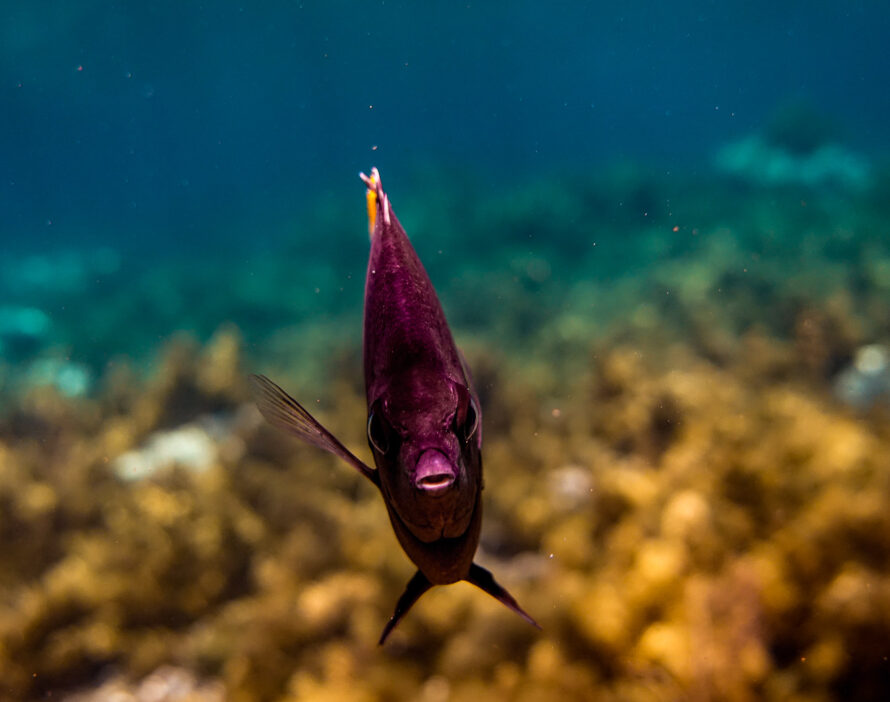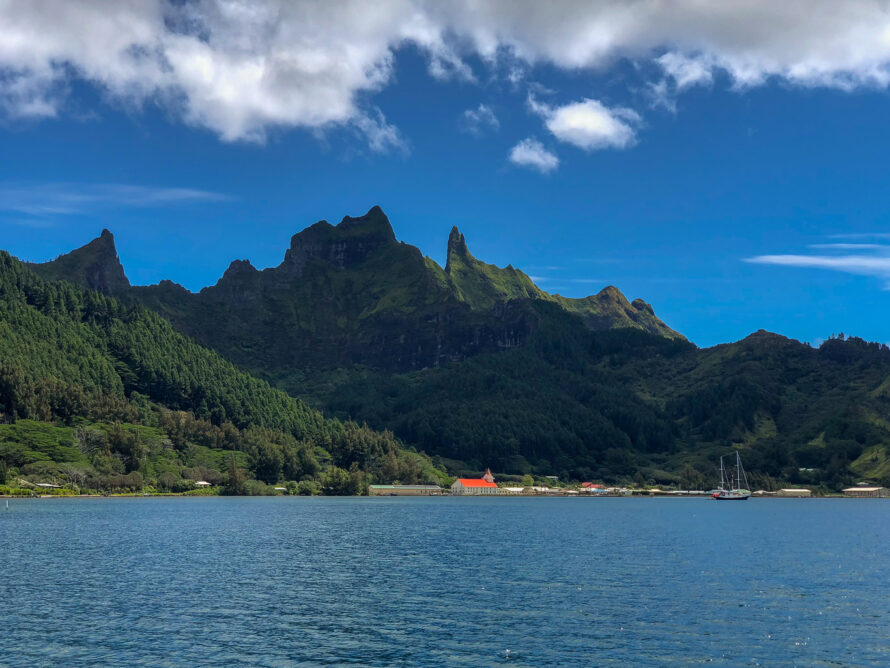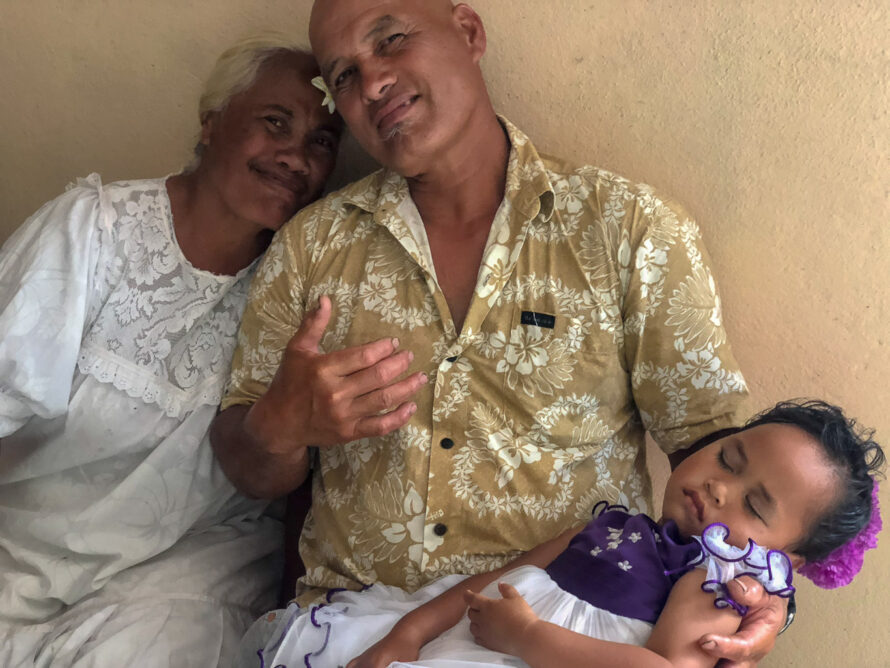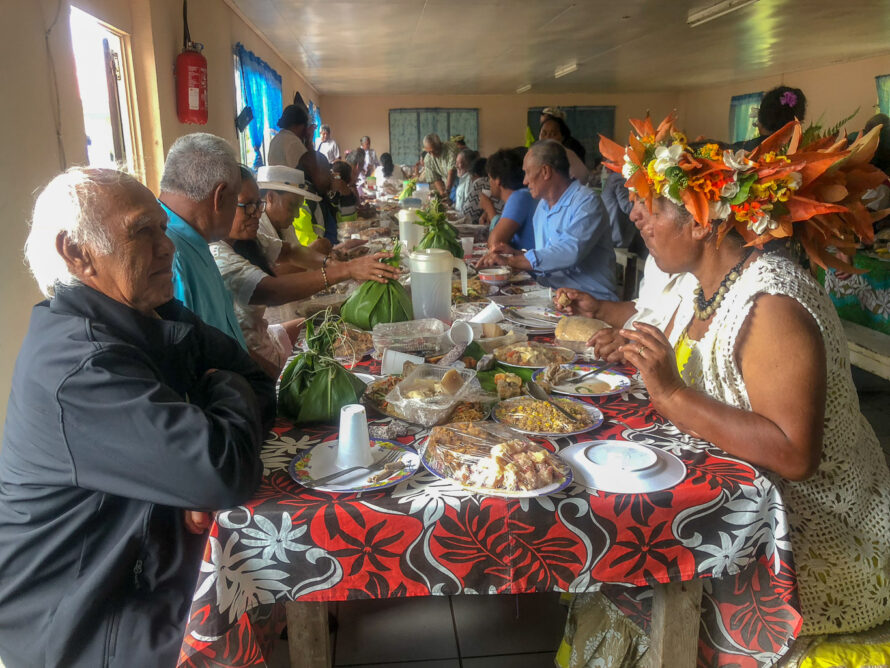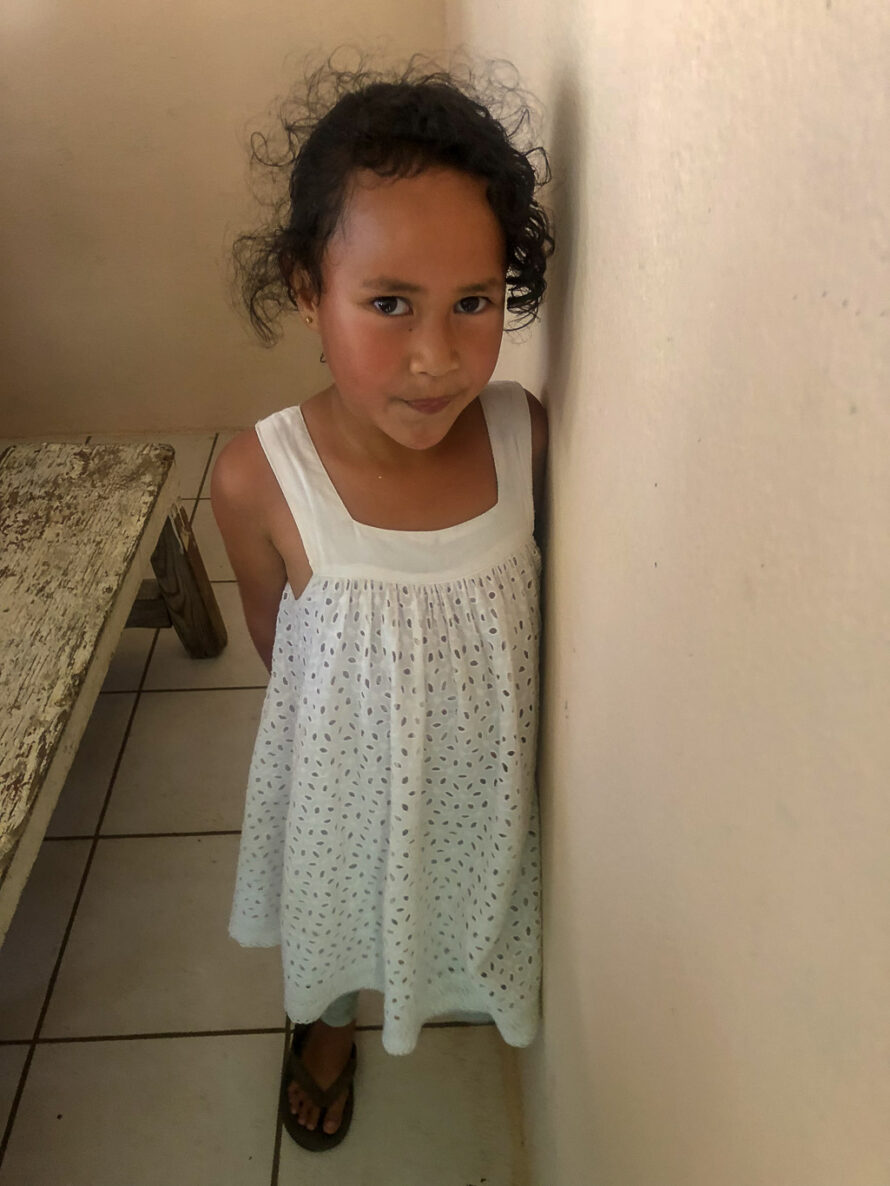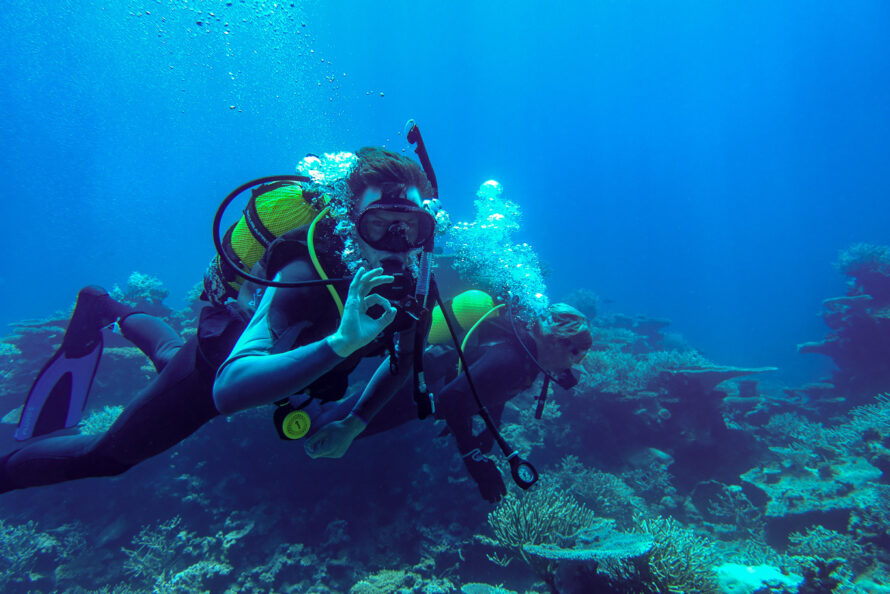Here are some of Wyatt’s pics from his two months (Nov-Jan) visiting in the Austral’s and the Gambier, 2019:
Category: Austral Islands
Australs with Wyatt
In a calm but northeasterly breeze we decided to anchor on the west side of the island of Rurutu. The southwest swell wasn’t big and it was a pretty spot. The next morning the sea began to build with an eerie feeling as we lifted on long rollers at anchor and watched them break bigger and bigger onshore until it was pretty clear the dinghy pass there was no longer navigable.
Still, it was a pretty day and we set sail to the south to see the rest of the island before heading for the small harbor on the NE side. Not far along we caught a small Yellowfin tuna, what Diana calls ‘the perfect size.’ Then as we approached the harbor we spotted whales and drifted for a while watching what seemed like two juvenile humpbacks playing, left behind as though reluctant to leave the tropical waters and join the rest who were already headed south to Antarctica. A last hurrah, for us too. It was calm and lovely and there was only one boat in the very small harbor (friends from the Gambier last season) when we ventured in and anchored, tying a long line to the wharf to keep from swinging. We were the 4th boat to check-in to Rurutu that year (in November!)~MS
The Australs lie a few hundred miles south of Tahiti, some just barely within the tropic of Capricorn, more remote islands like Rapa lie distinctly out of the tropics at 27 degrees south. We’re talking water temps below 70 degrees. Brrrrr. The weather is often challenging here and so these islands get few visitors. Intrepid tourists fly to Rurutu (where Wyatt met us) for the whales which winter around the island to raise their calves, but there aren’t enough visitors to support even one taxi. Still, whenever we needed to hitchhike, the first car would always stop to pick us up.
Rurutu is a hybrid island, half lifted makatea (limestone from petrified coral) and half volcanic, caves with stalactites like the atoll Makatea in the Tuamotus, but also real peaks and steep rock faces. No lagoon.
One day as we prepped for Wyatt’s arrival, a man swam by Allora and stopped to chat with us. The next day he appeared again, this time at the wharf with a pickup and three huge bunches of bananas, two giant squash and bucket of limes. These were gifts. Welcome to the true heart of Polynesian culture. We told him we could not possibly take three bunches of bananas, but he insisted. Obviously, he knew more about bananas that we ever will. They were timed perfectly to ripen one bunch at a time. Bananas for a month! A couple of days later two women showed up waving half of a tuna. We got one half and Charlotte and Pierre (the other sailboat here) got the other half. A gift again. We gave them what we could quickly scrap together, some cartons of juices, an uneven bargain indeed.
Picture Rurutu, an island with a few moderate peaks, Wyatt with his trail running shoes running circles, mountain to mountain, with occasional breaks to explore limestone caves with his relatively more sedentary mom and dad.
Rurutu grows coffee and strawberries. Yum!
We threw out a second anchor when the wind started blowing from the east northeast, and it got a little bouncy and rainy for a day or two, but nothing worrisome. Could have skipped the extra hook. A real northeast blow would not be good, but even twenty knots was fine in the small harbor.
We sailed passed Tubuai, reluctant to miss out on it’s vegetable gardens, and burned a little diesel to make it to Raivavae before dark. Like Bora Bora without the tourists, jets skis and cruise ships. Dodgy weather keeps it that way, but it was fine for our short visit. Lychee nuts were in season and we were given bags full.
There are bonefish in Raivavae. Wyatt and I spent the first afternoon fishing what looked like a classic flat. We caught Brassy Trevally, but saw not a single bonefish. The next day I decided to follow Diana’s advice and ask a local, and this woman very confidently pointed us to the unlikely looking shallows along the motu away from the “classic” flat. Wyatt spotted the first one a hundred feet down the beach and hooked the first one a hundred feet later. There were lots of fish, but they were very picky. It took a while to get the presentation right.
There’s a point of sand that separates the classic flat and the long beach where the bones actually are. It’s a steep drop off and the trevally cruise the edge. We were having fun chasing those, Wyatt with popper, when a Giant Trevally (GT) swam up on the flat, in about two feet of water. I finally got a cast to it and it swirled on the fly, but didn’t hook up. It looked at the fly one more time, unconvinced, and then swam back toward the edge, right toward Wyatt. I yelled to him that it was coming and he cast the popper out into the deep and waited until the fish was close. I’m not going to be able to adequately describe the excitement of watching that huge fish (guess 80 pounds) charge after his fly, straight at him. It finally engulfed the popper with a furious and massive gulp just fifteen feet in front of Wyatt. Holy shit! At first it didn’t quite seem to know what’s up. I played Dad yelling, “Let it go, let it go!” afraid it would break him off immediately, and Wyatt’s yelled back, “He’s not running.” And then he did (may I say holy shit again) and never stopped. Finally Wyatt had no choice but to start adding drag and inevitably the fish broke off. It would have been a miracle to land a fish like that on an 8 wt fly rod. But who cares? That was unforgettable. If you want to get a real idea of what it looked like watch BBC’s Blue Planet II Part I, “One Ocean” about 14 minutes in. Let David Attenborough explain it to you. Giant Trevally gather at a particular South Pacific atoll to feed on fledgling birds, literally jumping out of the water and grabbing them mid air or swallowing them whole when they make the mistake of resting on the water. The whole series is awesome.
We hiked the peak, watching Wyatt traipse ahead in the distance, spec of a red shirt bobbing on the steep green slopes of the peaks. The view from the peak was beautiful, but all I could think about was a chance lost to get one of those GT, this time with a 12 wt rod that might stand a chance. We had to leave the next morning.
The sail from Raivave to Rapa wasn’t too bad, but like all the sailing in these latitudes, the winds were fickle compared to the steady trades we’ve been accustomed to in the Tuamotus. Very light from the east when we arrived. We took a rare opportunity to anchor in one of the northern bays. In stronger winds no doubt the waves wrap and make the anchorage uncomfortable at best.
Wild horses, cattle and stone foundations, the remains of earlier settlements. We explored the valley and the next day climbed the ridge, aiming for a nearby peak, but halfway up we spotted a group of outriggers paddling toward Allora. We weren’t sure who they were, but they finally spotted us up on the hill and paddled over, we climbed down to meet Alain and , the one Rapa policeman, plus paddling friends. They’d figured out we were here (having not checked in), so they came to greet us. They returned in the morning, we thought to check us in, but really to have coffee and muffins. They looked at our papers but then asked us to come see them in town to really check in. It was an elaborate process considering we were still in French Polynesia, but super nice guys. It probably didn’t help shorten the formalities that Diana kept making the yummy muffins and cookies, no doubt it could be done in one stop instead of three.
We heard somewhere that there was a compressor on the island for filling scuba tanks, owned by the community. To get our tanks filled we had to go see the mayor of Rapa, who is also the main guy at the post office (used for banking and many other purposes here). Once we got the nod, they would not take money, and sent three young guys to collect them, and then return them to the dinghy on the dock.
Everything in Rapa went like that. We were given as much tuna as we could carry. “No money. No money,” and bags of peaches and nectarines and a local berry kind of like a blackberry. We tried to gift back, Diana baked peach muffins and banana bread, and we gave them little things from the boat and fishing line, but really you can’t win a gift giving contest with a Polynesian. They have the home turf advantage. It was all light hearted and a real pleasure.
To manage their fisheries, the island has a general ban that is in place most of the time for the east side of the island called the Rahui. From time to time they lift the ban and the boon of fish is piled up on the docks and shared among the whole community. Everybody gets fish.
There is no airport in Rapa, and it’s quite isolated, so things have to work differently. Not much room for disparate income levels, and the pretense of independence that underscores our western culture. No doubt there are tensions that go with that. Everybody knowing everybody’s business. It’s a small island. Centuries ago, before the arrival of Europeans, things got really, really tense on Rapa, which is just five miles across. There are the remains of fifteen forts on the island, occupying all the peaks and high ground to be found.
Wyatt and I cleaned Allora’s hull in preparation for our passage to the Gambier. Deep water under cloudy skies. We were circled by curious Galapagos sharks for the whole hour or so underwater.
Before leaving we visited church, for the hats (amazing) and the singing (magical). We were told everyone went, but in fact, only about seventy out of the four hundred some odd souls of Rapa showed up. Alain, who told us everyone went, wasn’t there either. Children attended, minded by an imposing man with a very big stick. The program was dismally long, and heavy on patriarchal themes, but it concluded with a feast and more music, the insistence that we bring lots of leftovers away with us.
We prepared to weigh anchor in the rain, but our chain was trapped between two towering bommies in the deep anchorage. Diana had to put on scuba gear and dive sixty feet in the gloom among the sharks to free it.
On our way out, we spotted Raymond, our tuna and peach benefactor who was running shuttles across the deep channel to take people back from church. Wyatt scooted over in the dinghy with a Montana hat to give him. He laughed because we got him, he had nothing on him to give back! ~MS
THROUGH WYATT’S LENS:
Follow Wyatt and his buddy, Tully, as they embark on their northern Russia expedition: https://www.summerinchukotka.com
